Submitted by WA Contents
ARQBR Arquitetura e Urbanismo built concrete church complementing the Brazilian landscape
Brazil Architecture News - Apr 28, 2023 - 13:48 2533 views
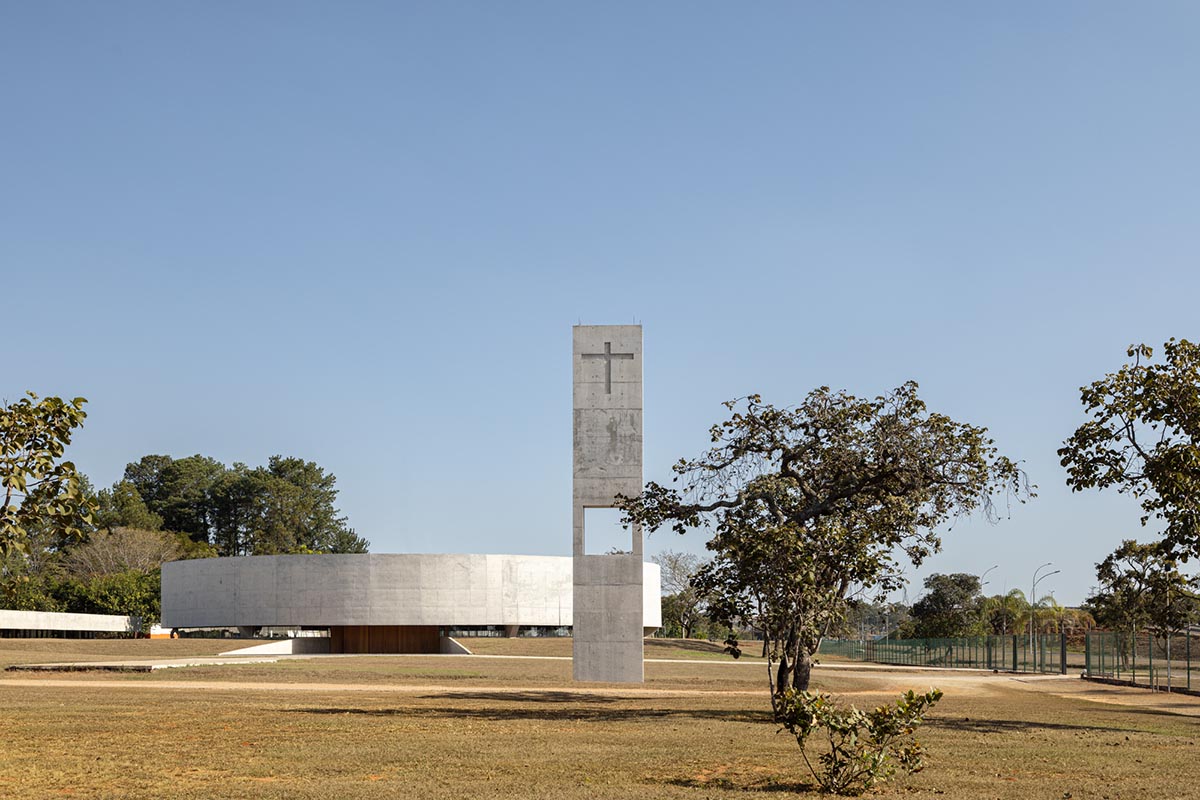
Brazilian architecture practice ARQBR Arquitetura e Urbanismo has built a religious complex with geometric concrete volumes that complement the Brazilian landscape in Brasília, Distrito Federal, Brazil.
Named Church of the Holy Family, the complex is comprised of five main structures: a circular-shaped church at the center, a linear annex building, an existing building just behind the annex, a parish house and a vertical church steeple.
Rectangular and circular volumes are elegantly distributed on the landscape with low-rise structures, each of which becomes an element of the whole landscape.
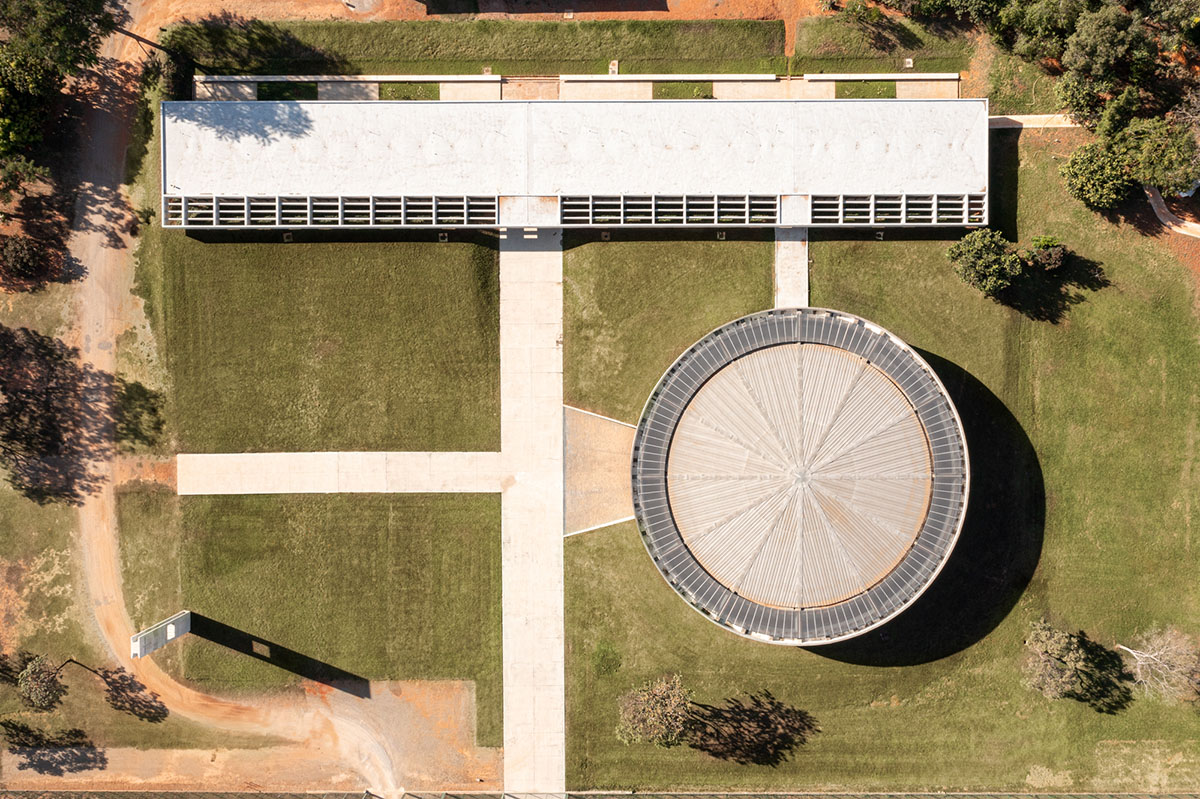
To achieve this concept, the studio is inspired by the words of Lucio Costa, French-Brazilian architect and urban planner who is known for his plan for Brasília.
"The presence of the horizon" was the key expression to define the concept of the project, according to ARQBR Arquitetura e Urbanismo.
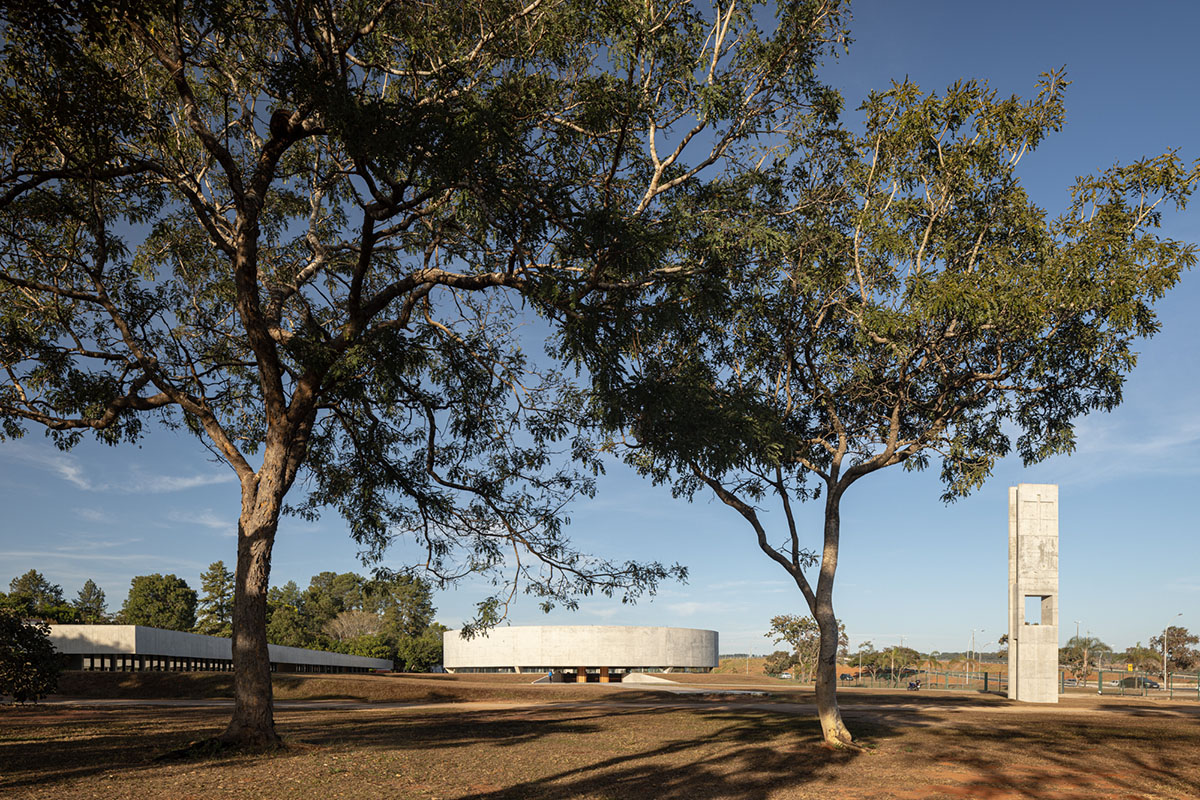
"Beyond the sense of organization and orientation, the horizon expresses the vision of the whole and, primordially, the connection between the observer and the environment, a condition that is necessary to the manifestation of the landscape," said ARQBR Arquitetura e Urbanismo.
"From the design gesture to its printing on the territory, the four scales – monumental, social, residential, and bucolic – point out the contemplative sensitivity given to the landscape, the consideration to the urban ambiences, as well as the distinguished manners of treating them."
"But it is precisely the bucolic scale that is going to define Brasilia’s character of city-park, by evidencing the proximity with wild nature and an aesthetic continuum between living spaces, free spaces, great extensions of cerrado vegetation, parks, green belts extending along roads, and the always unimpeded horizon," the studio added.
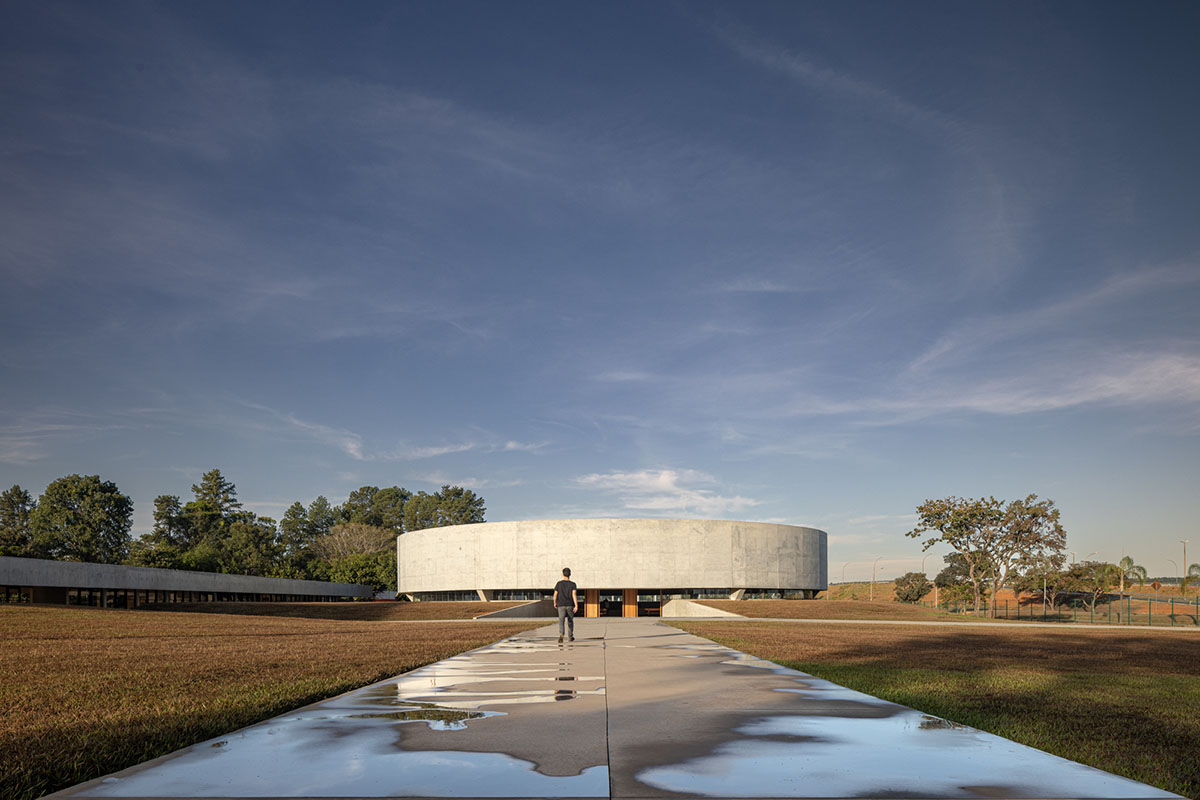
"Characterized by an exuberant avenue of eucalyptus that shaped the entrance of the city, EPIA, which began to be controlled by the federal government in 2004, was recently transformed in an expressway, having had its lanes extended and its traffic segregated from local traffic."
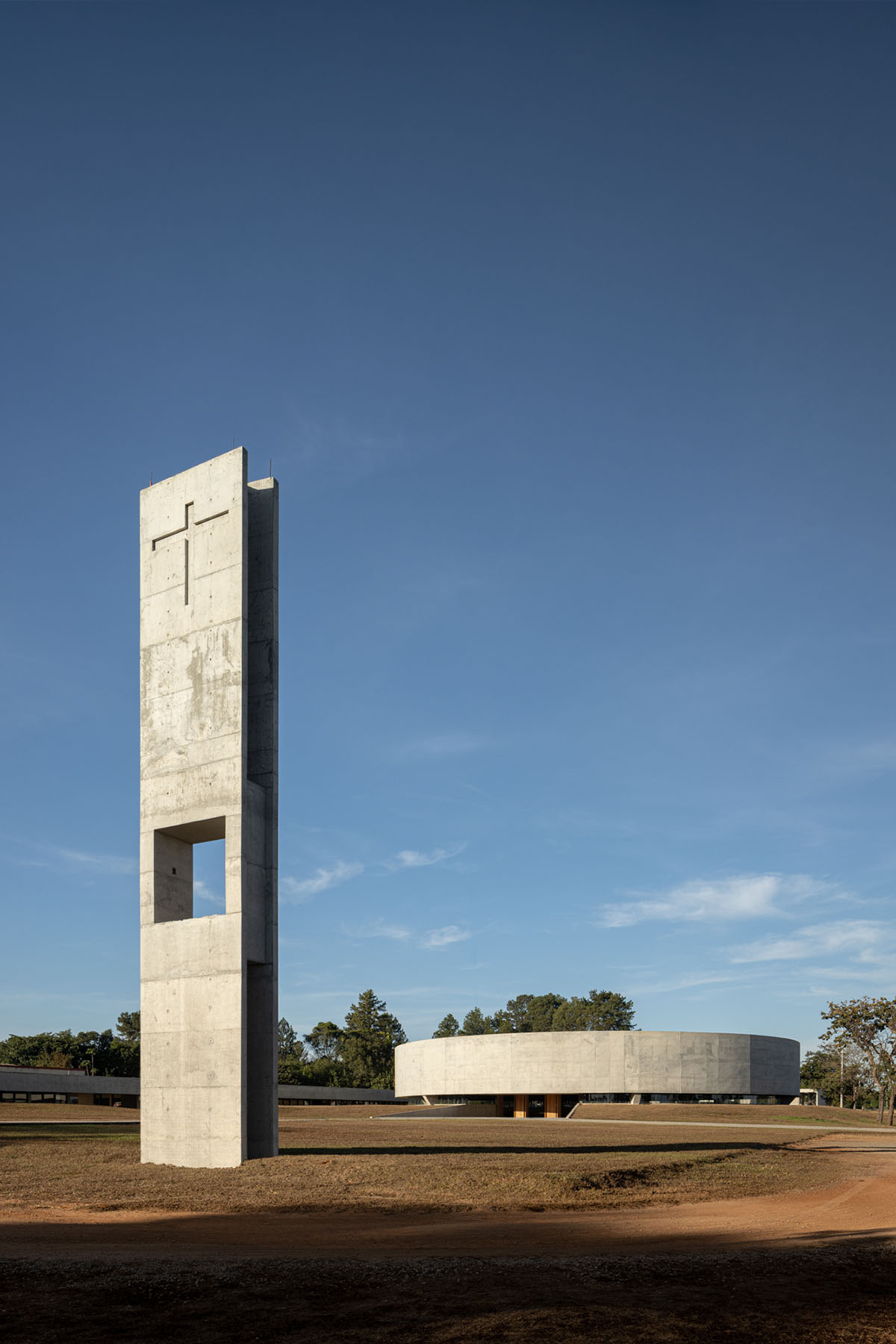
"Almost all the trees having been cut to accommodate the marginal lanes resulted in its surrounding losing its characteristic bucolic character, which was reinforced by the partitioning of the land, the extensive growth of expensive housing and great commercial enterprises, creating ruptures in the urban configuration and conforming a generic landscape under constant change."
The studio added that "the urban function of the road, the attention to the scenic qualities and the sensitive experience of the route give place to speed, to efficiency and to fluidity under a highway logic."
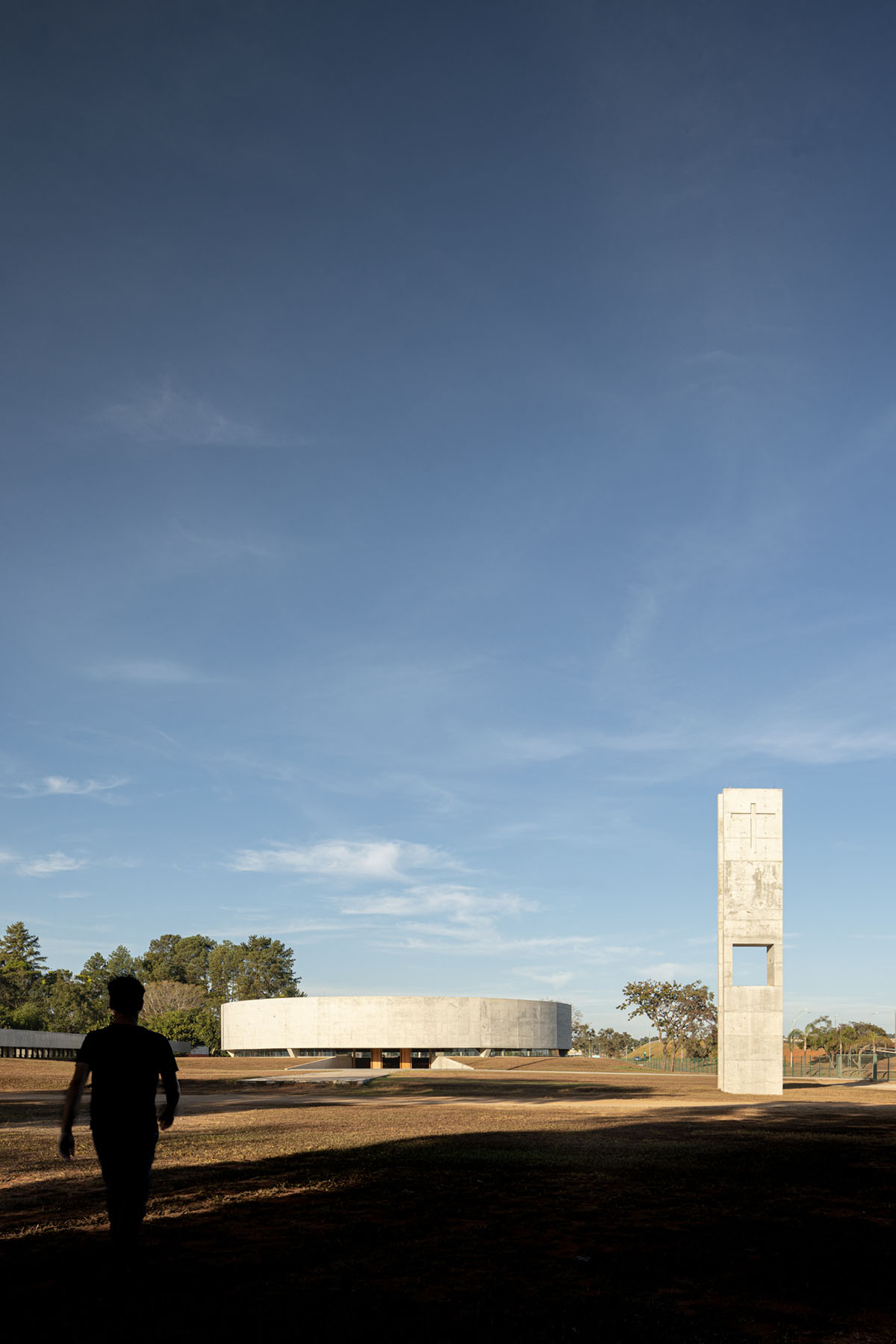
The project features a strong relationship between spirituality, nature, and community. Spirituality communicates itself in the Catholic religion through its rites, celebrations, and sacred symbols. The sacred sense stands and renovates itself through the sensitive contact of nature, which evokes the divine presence and the integration with the cosmos.
Architecture, on its turn, has been the privileged space of manifestation of the sacred by the person who occupies it, where the light penetrates delicately or where the silence of the stone manifests itself in the murmur of the prayers.
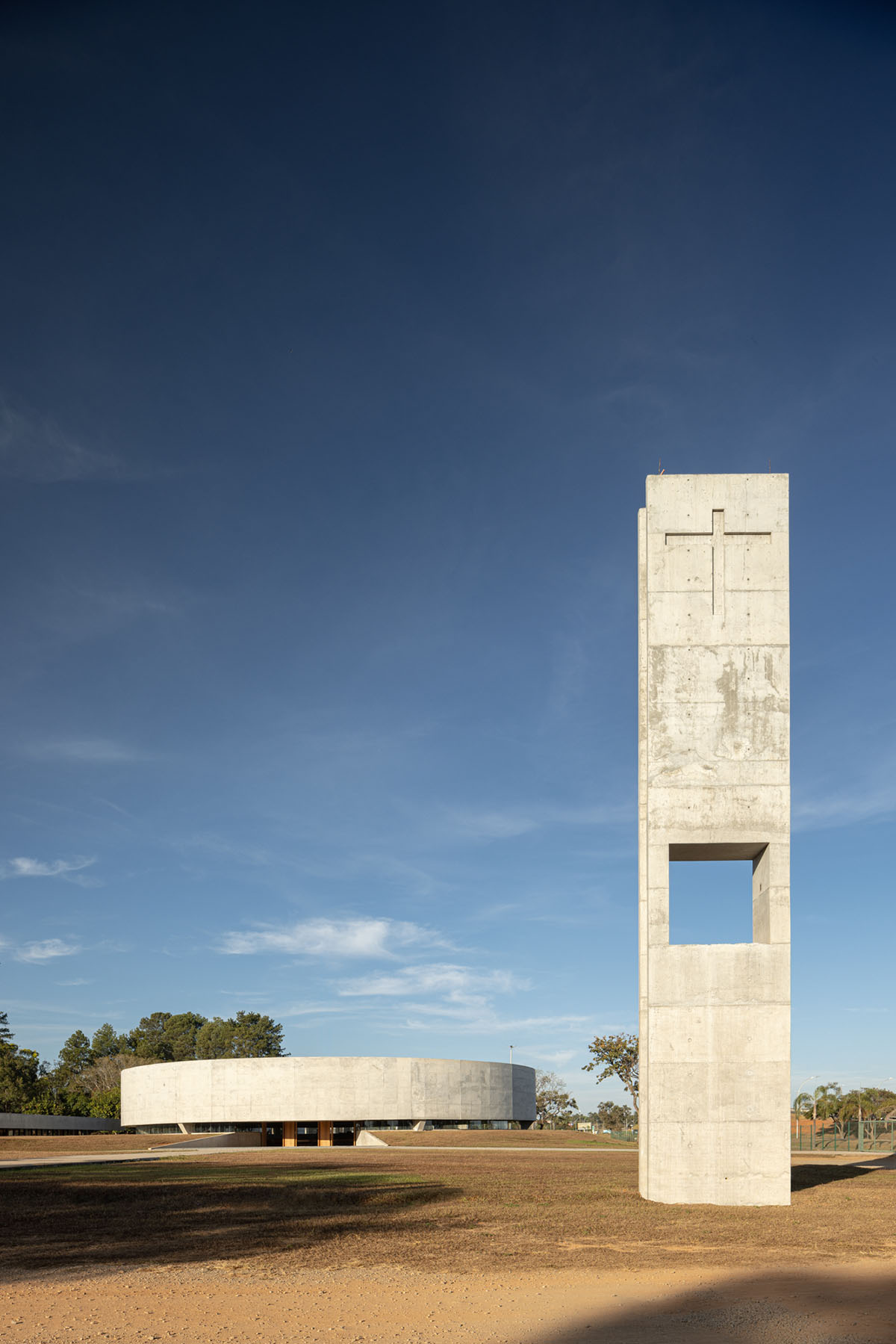
At the center of the plan, there is a Circular Nave that brings as a concept this gesture of welcoming, as it approximates the altar to the congregation.
While natural light is penetrated through the roof of circular ring, transforming the internal space of the nave, it is disposed half level below the natural height of the plot.
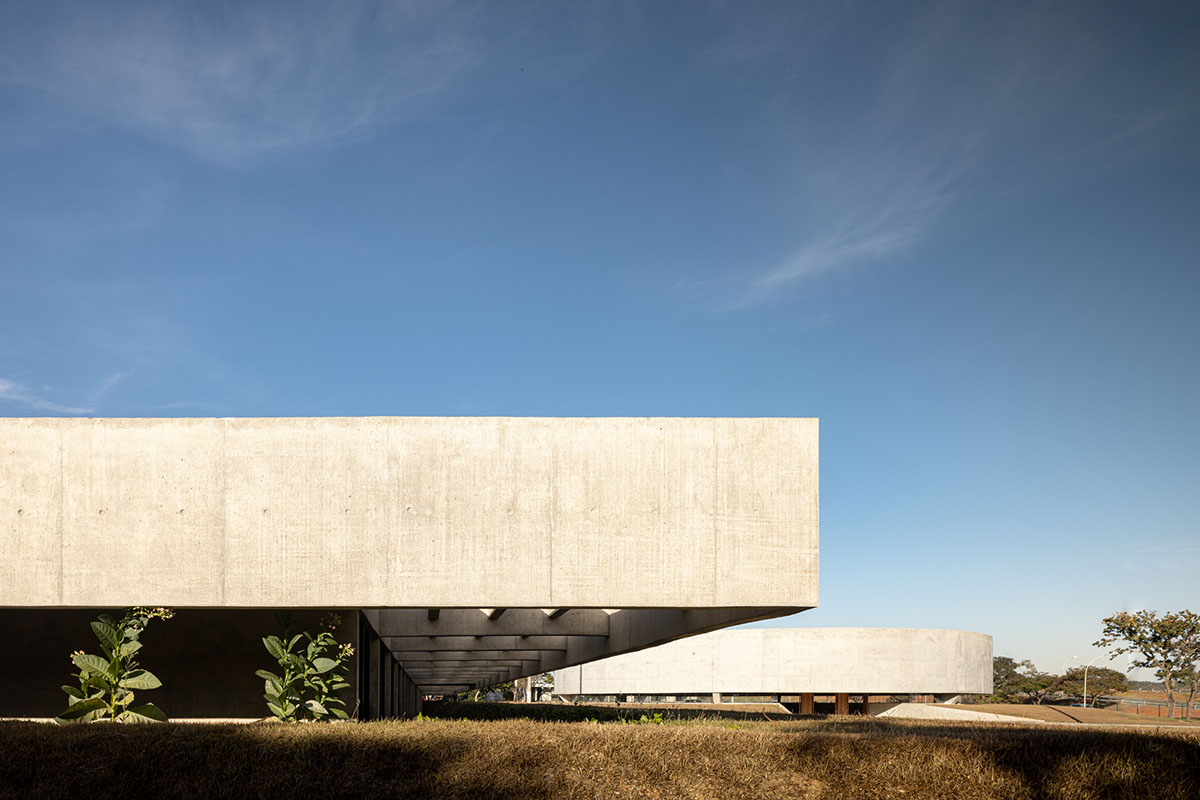
According to the studio, this allows the overflow of the landscape through a small opening aligned to the ground floor, while preserving the intimacy of the internal space.
The circular concrete volume is supported through six pillars anchored on the topography to provide an delicate elevation.
By revealing the presence of the horizon, the architecture becomes a constitutive element of the landscape, an opening to the poetic dimension of the world, connecting the material reality to its spectator’s gaze.
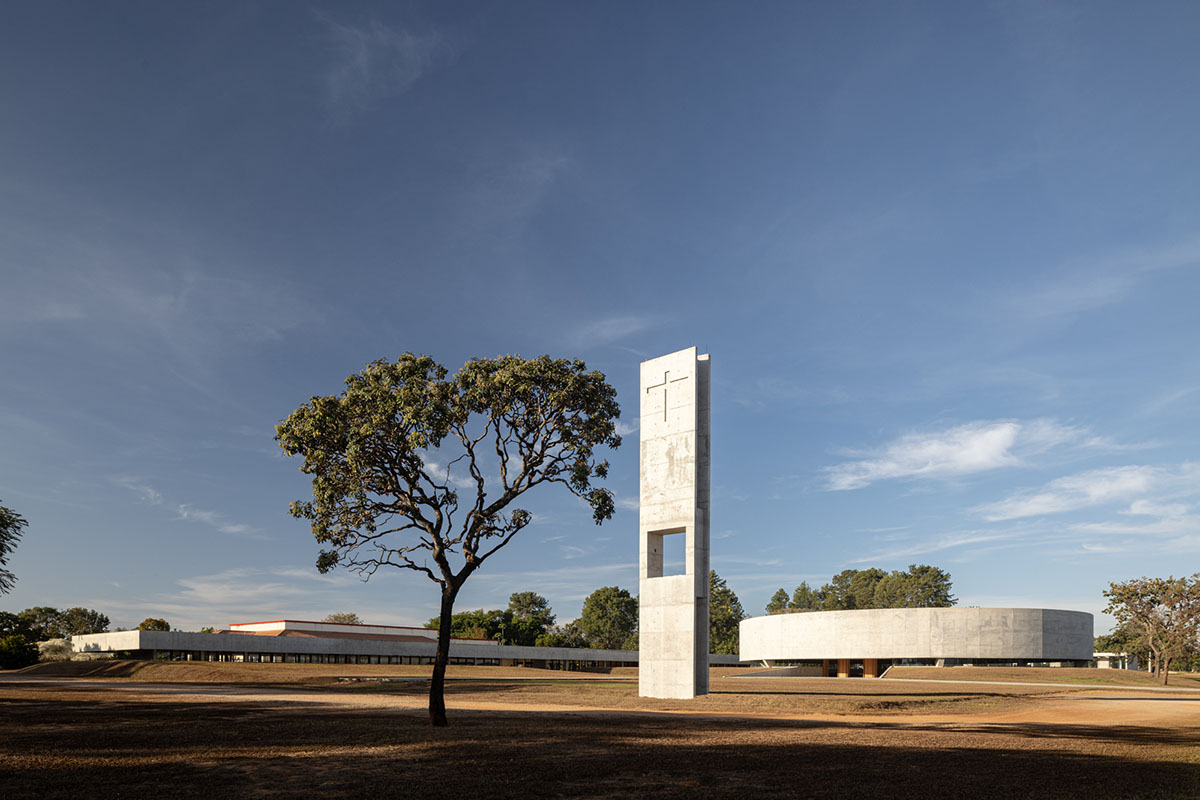
The overall distribution of the volumes is defined by two main axes. The northwest-southeast axis connects the circular nave, the annex, and the existing building to the back, where the parish activities are located.
Along its extension, there is a linear square, a space facing the city, which serves as support to the erratic route of those who are immersed in the ritualistic act or even the traveler on the road, in the search for the suspension of the everyday life or for a refuge from the torments of being.
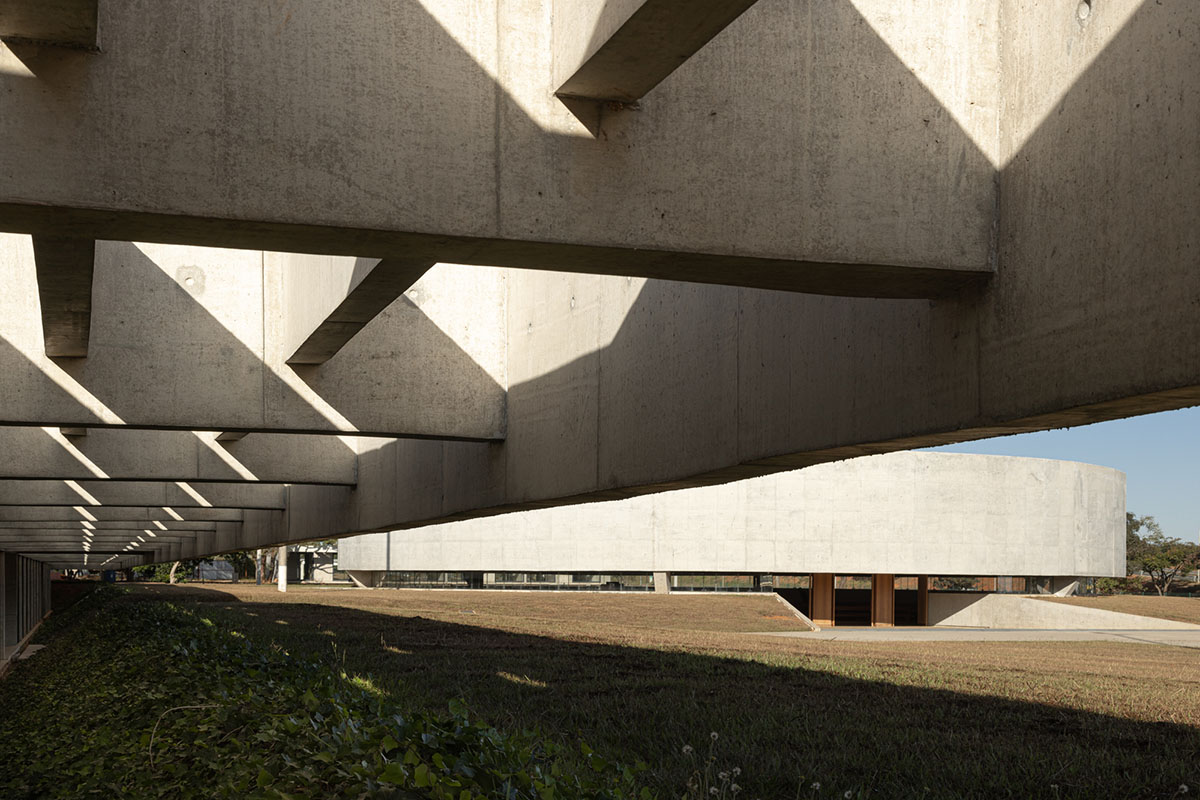
Perpendicularly, the northeast-southwest axis preserves the contemplative view: the crossing of the line of the horizon with the vertical volume of the campanile signals and guides the visitor or those who cross the highway in full speed at a distance.
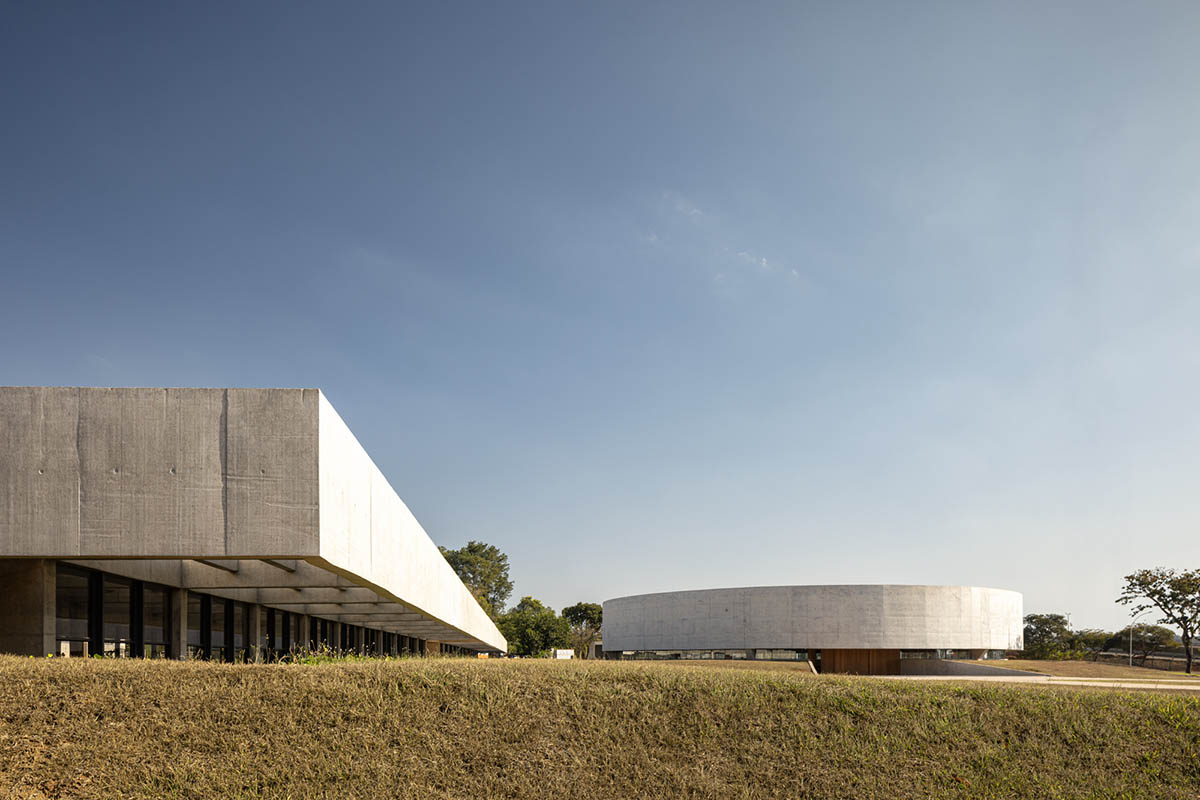
The architects stated that "it is possible to state that the architectural concept synthesizes the three fundamental premises of Brasilia: the implantation of the architectural complex, delicately applied on the topography, and its opening to the horizon; the inseparability between the urban and its architecture, between public and private space and, as a consequence, between the community and the sacred; and thirdly, the consideration of the landscape as a structuring and fundamental element of the architectural configuration, recognized by Brasilia’s inclusion on UNESCO’s List of World Heritage Sites.
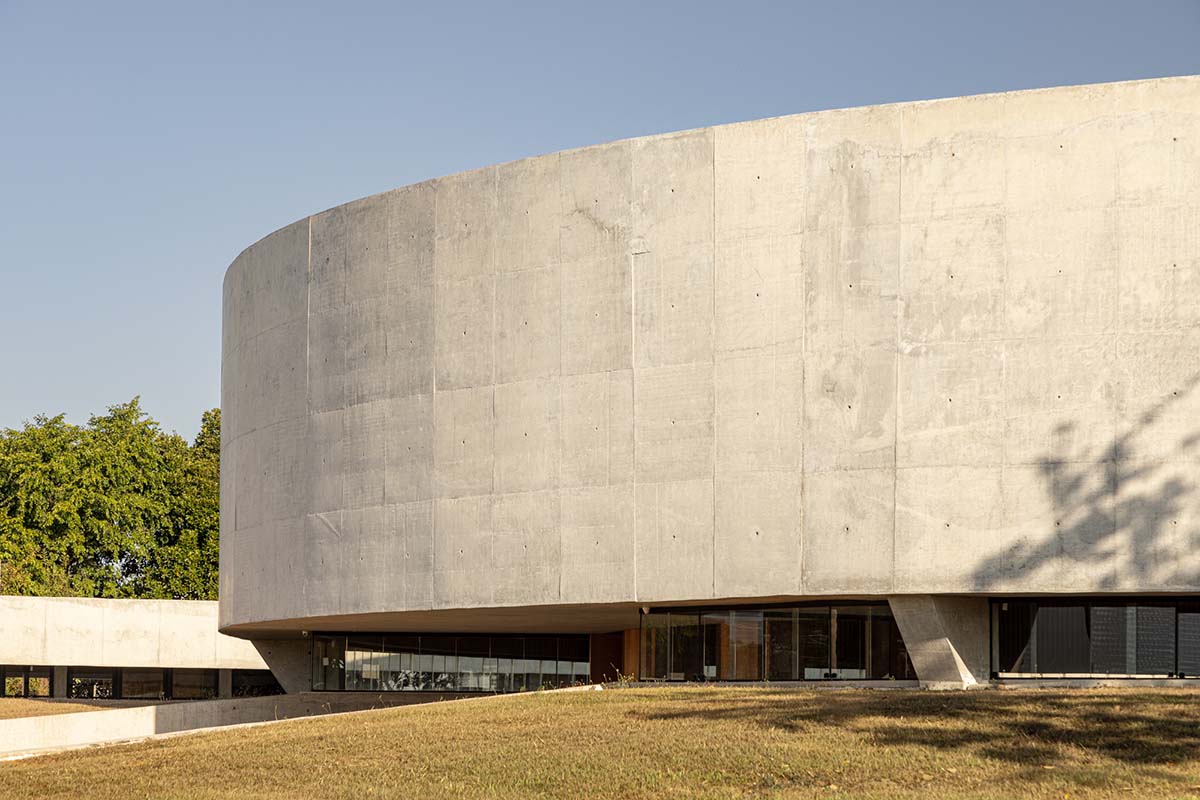
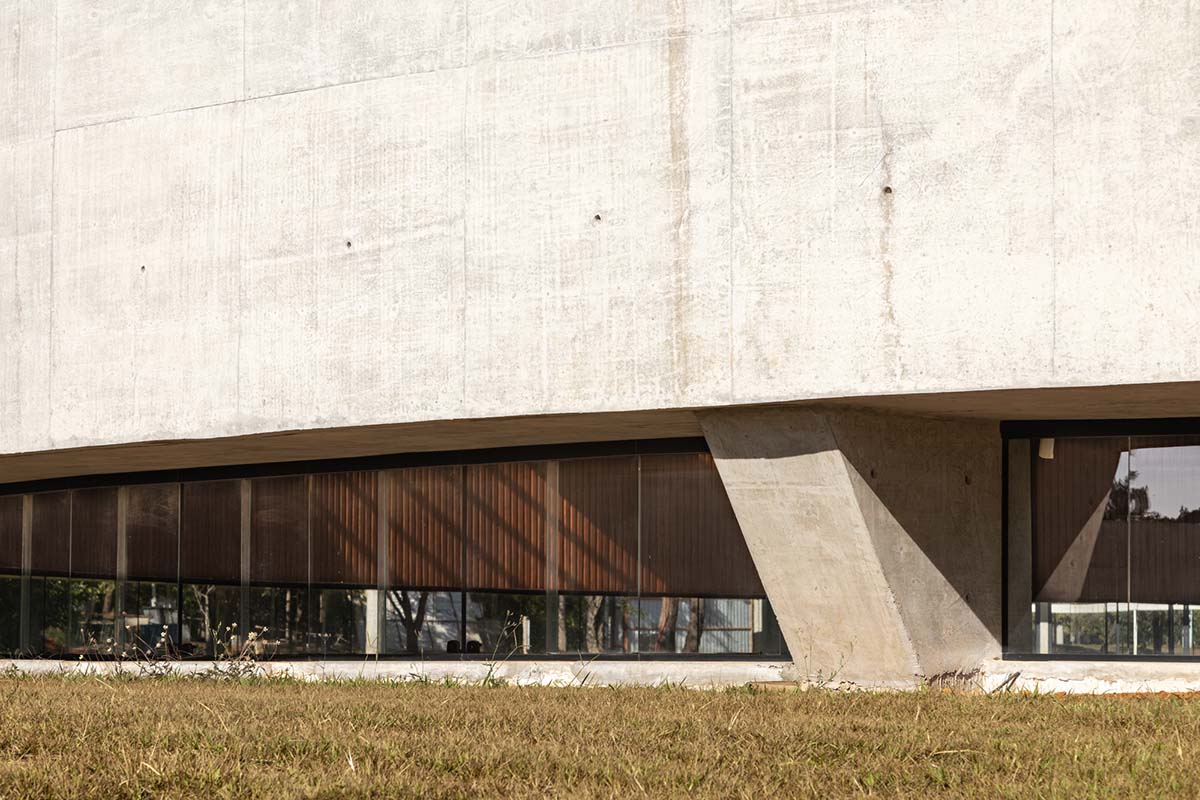
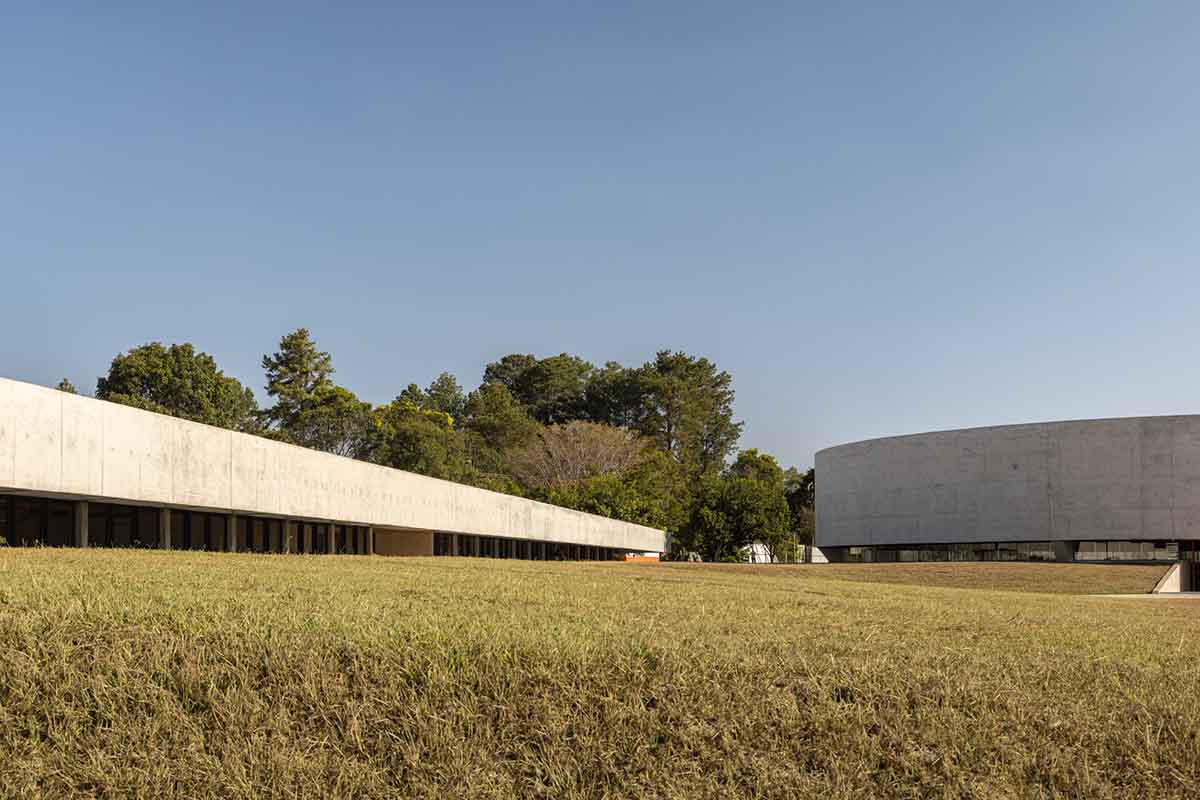
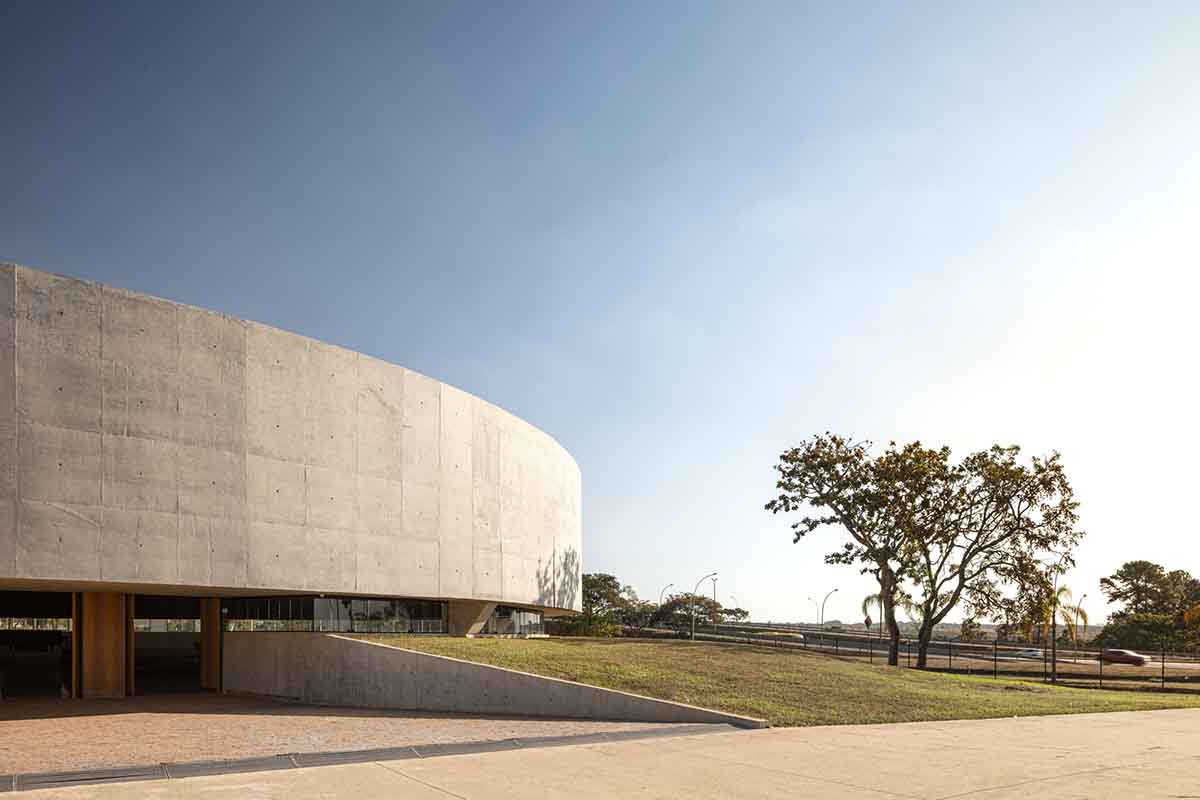
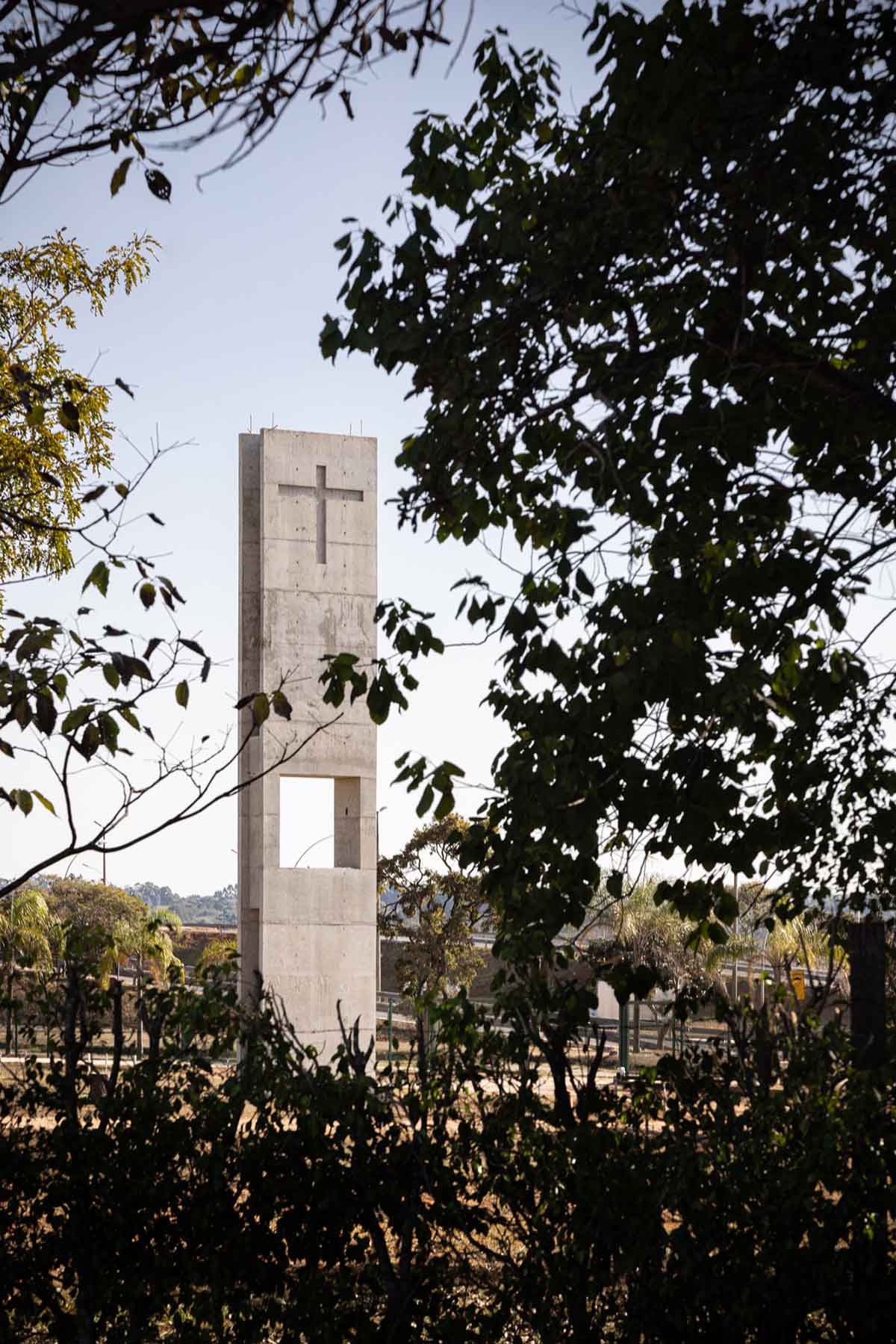
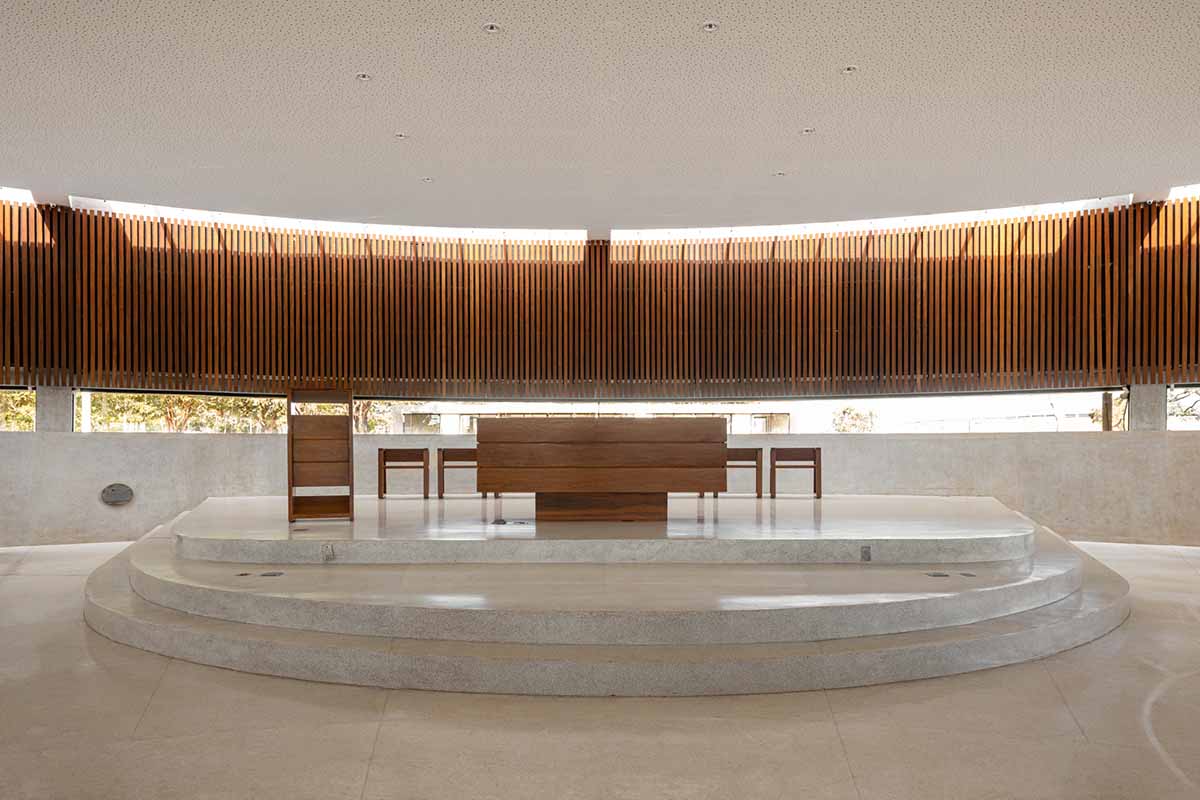
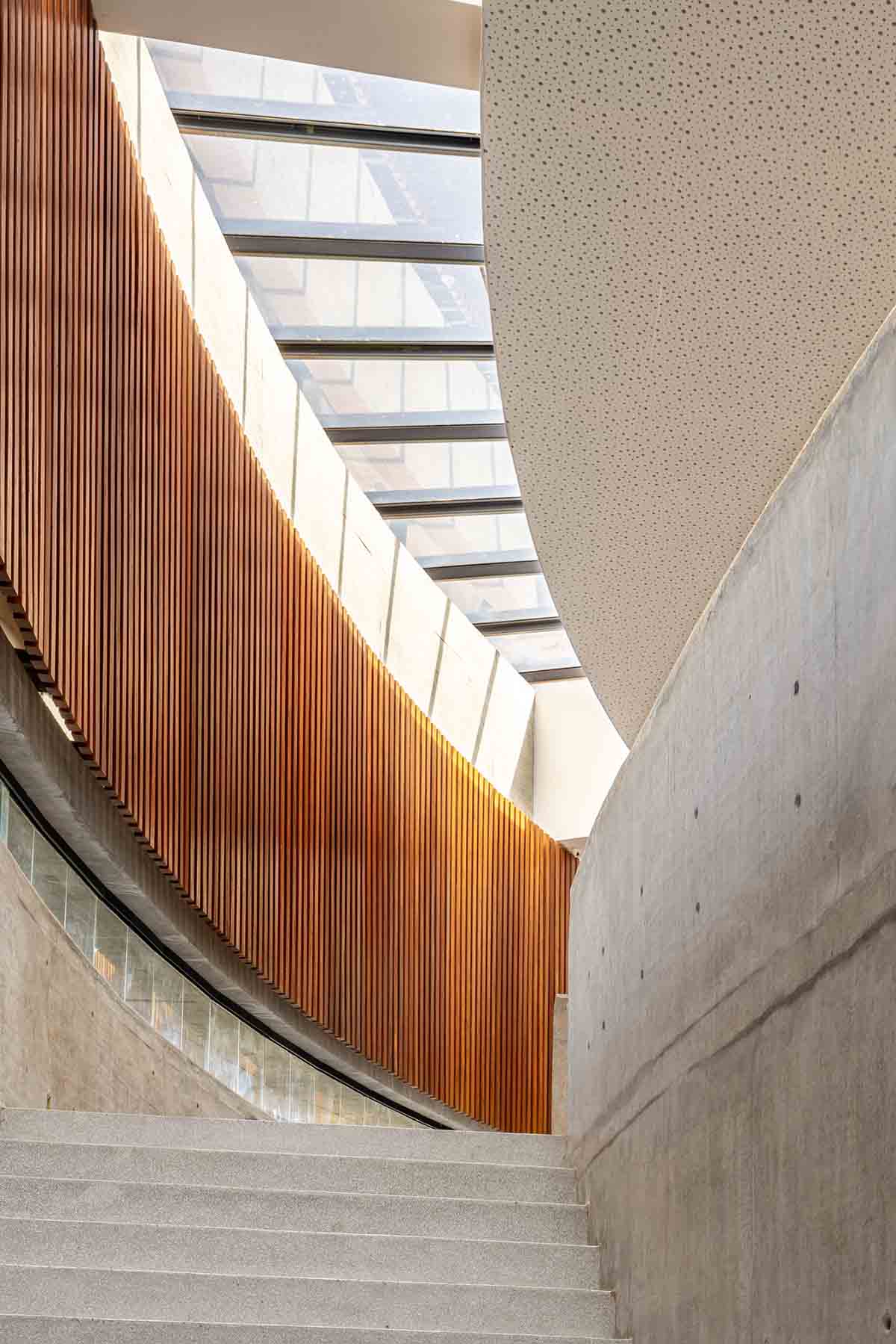
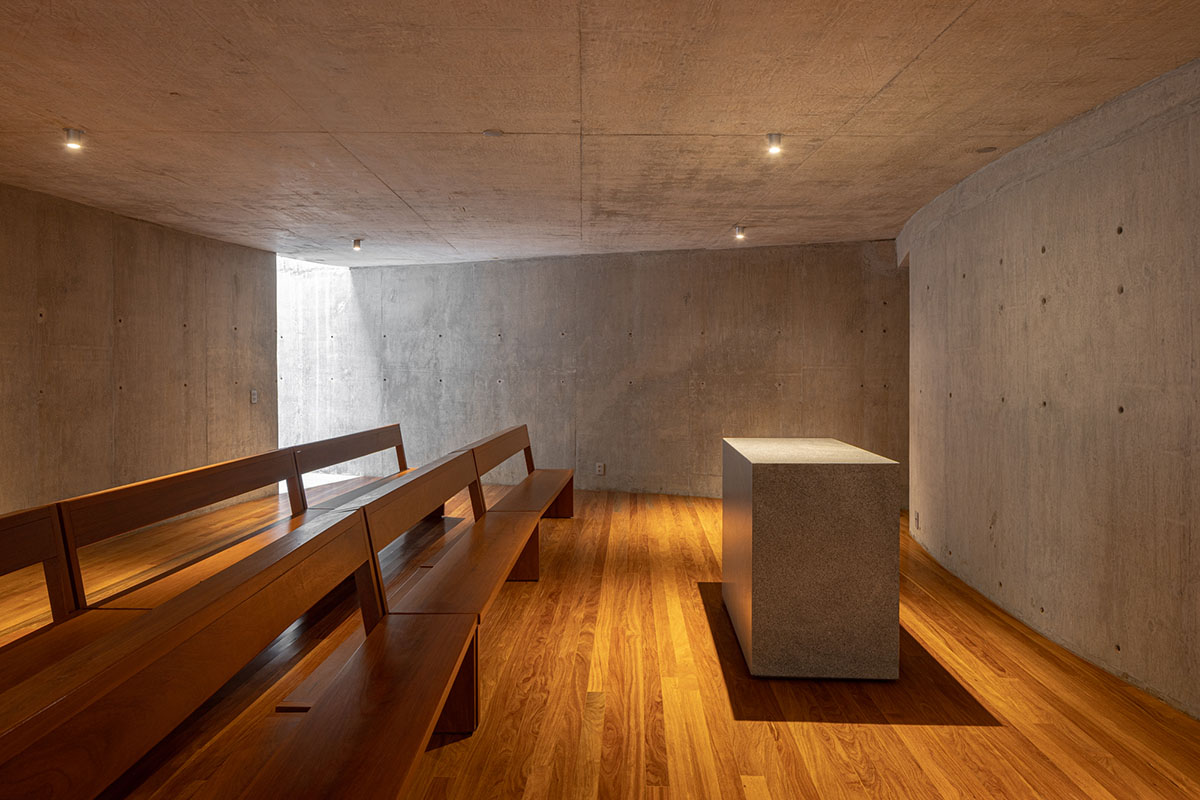
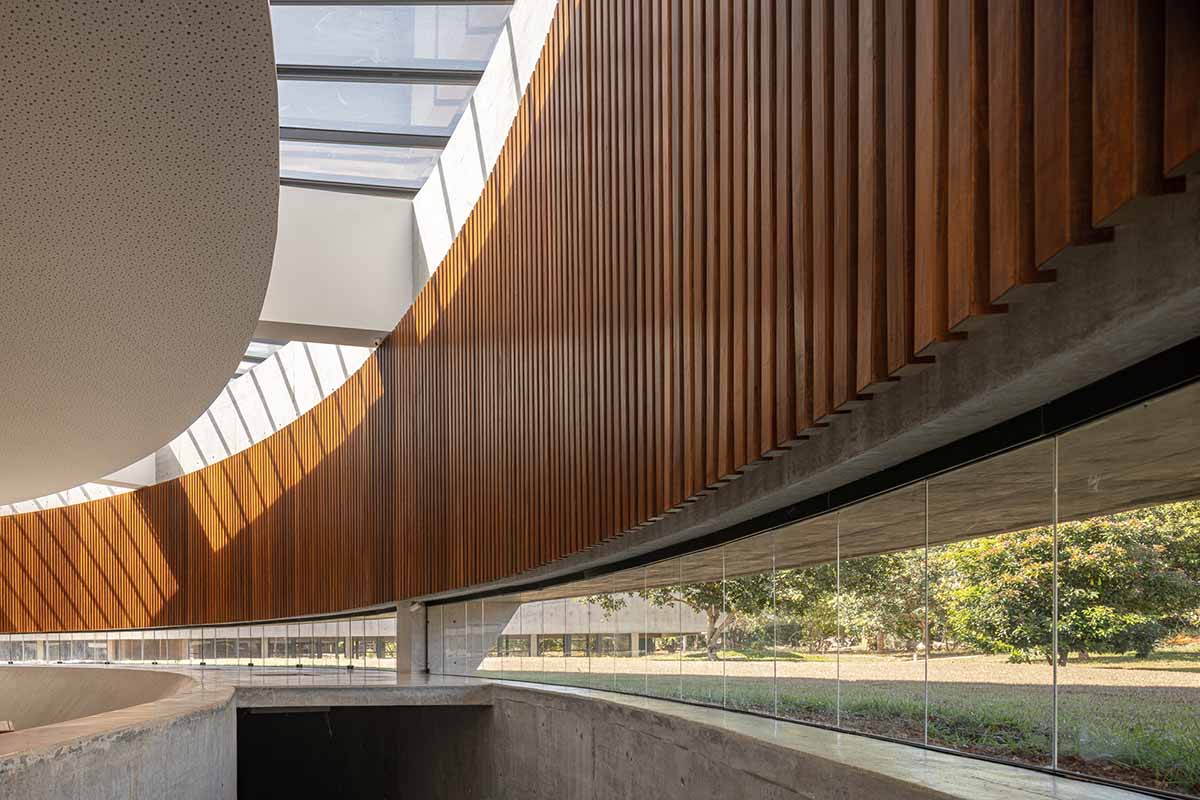
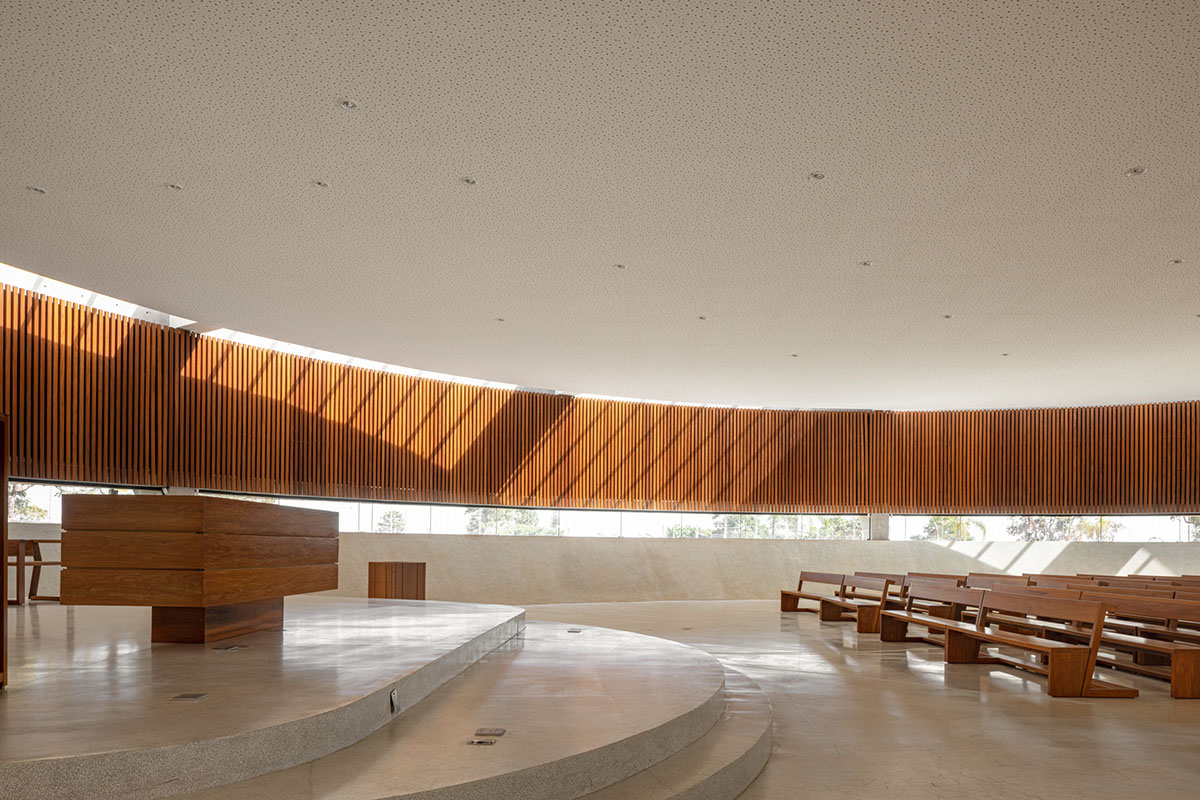
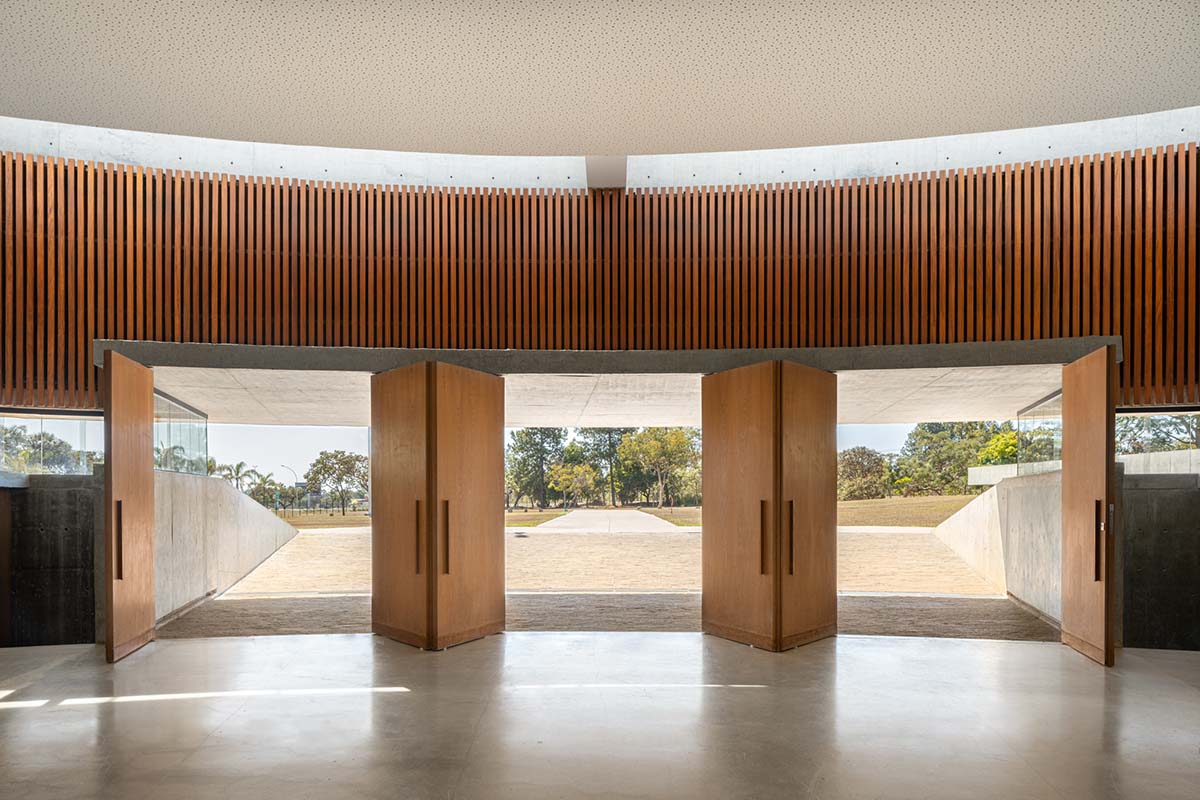
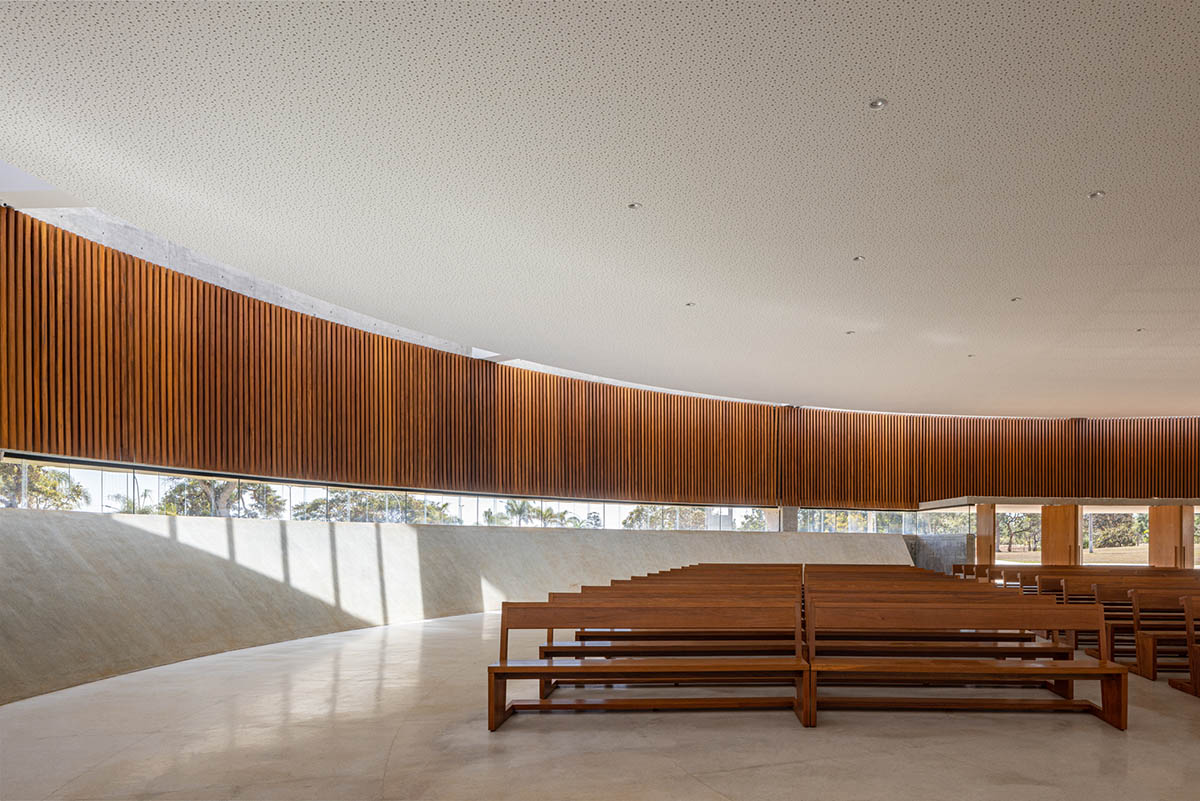
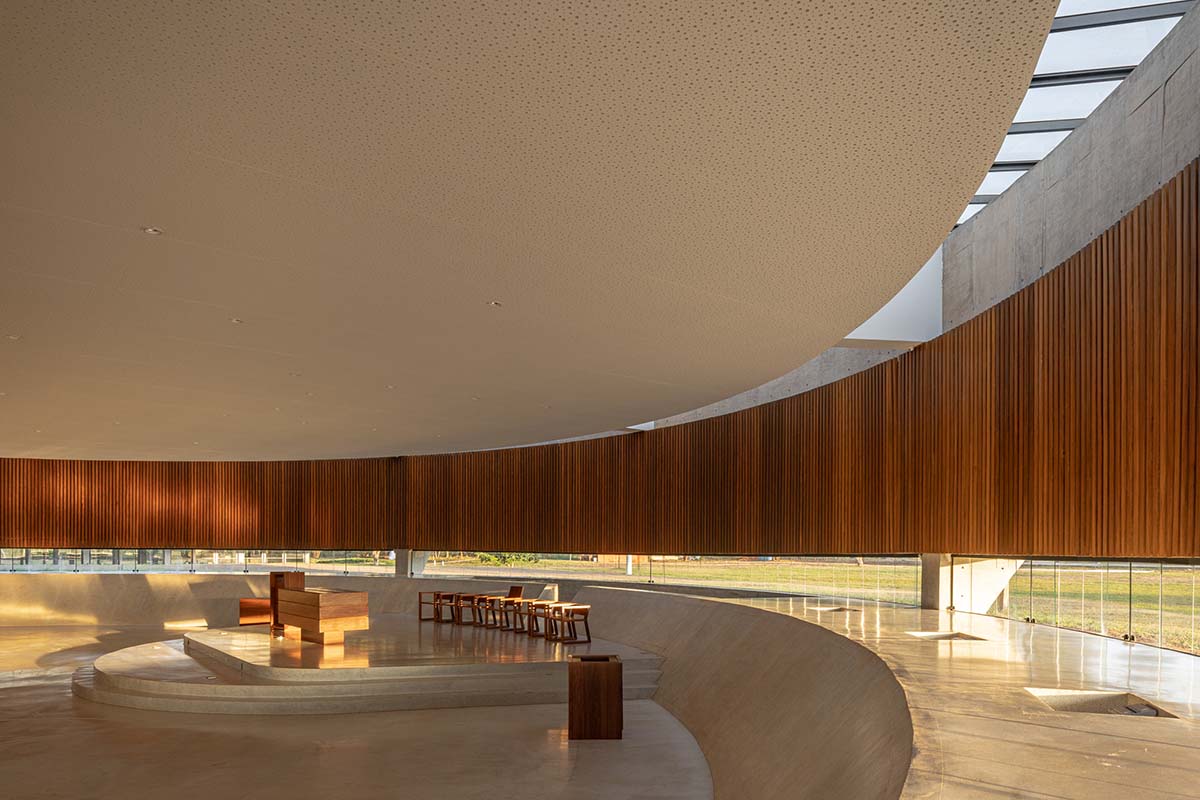

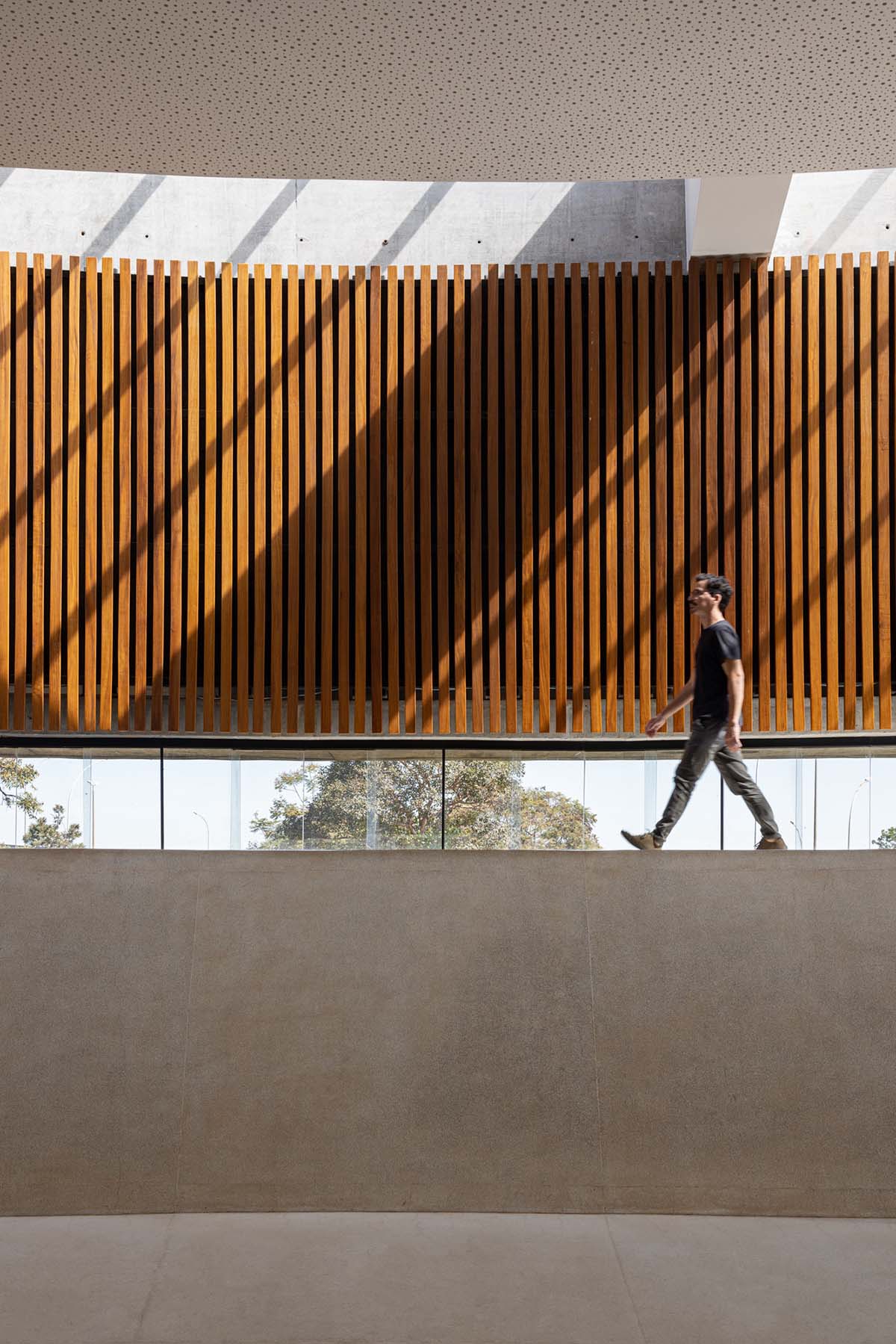
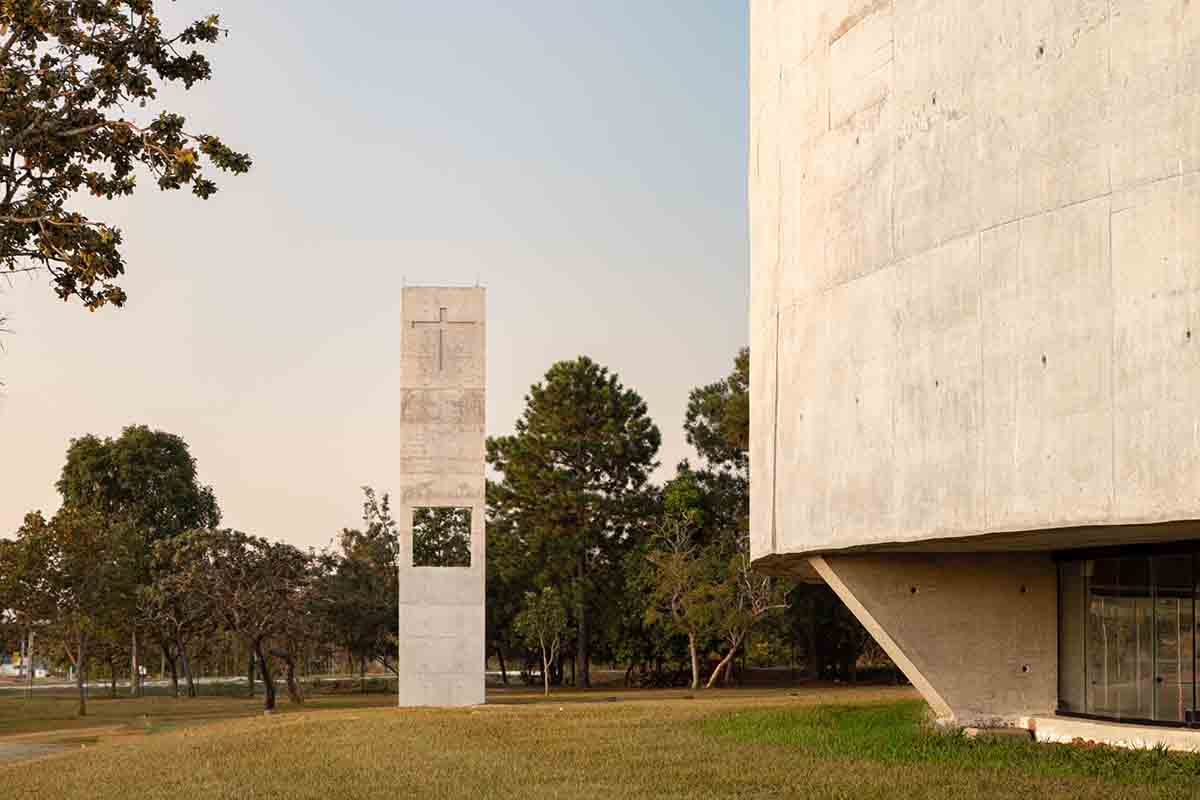
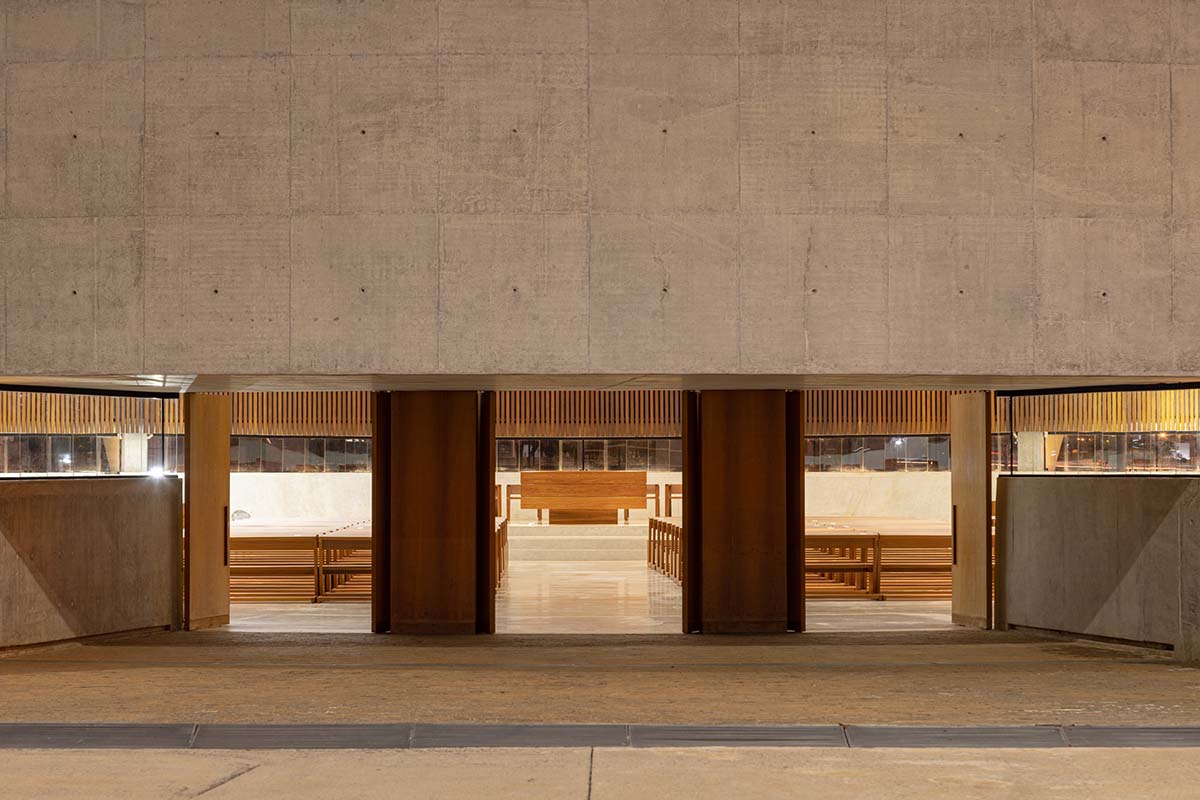
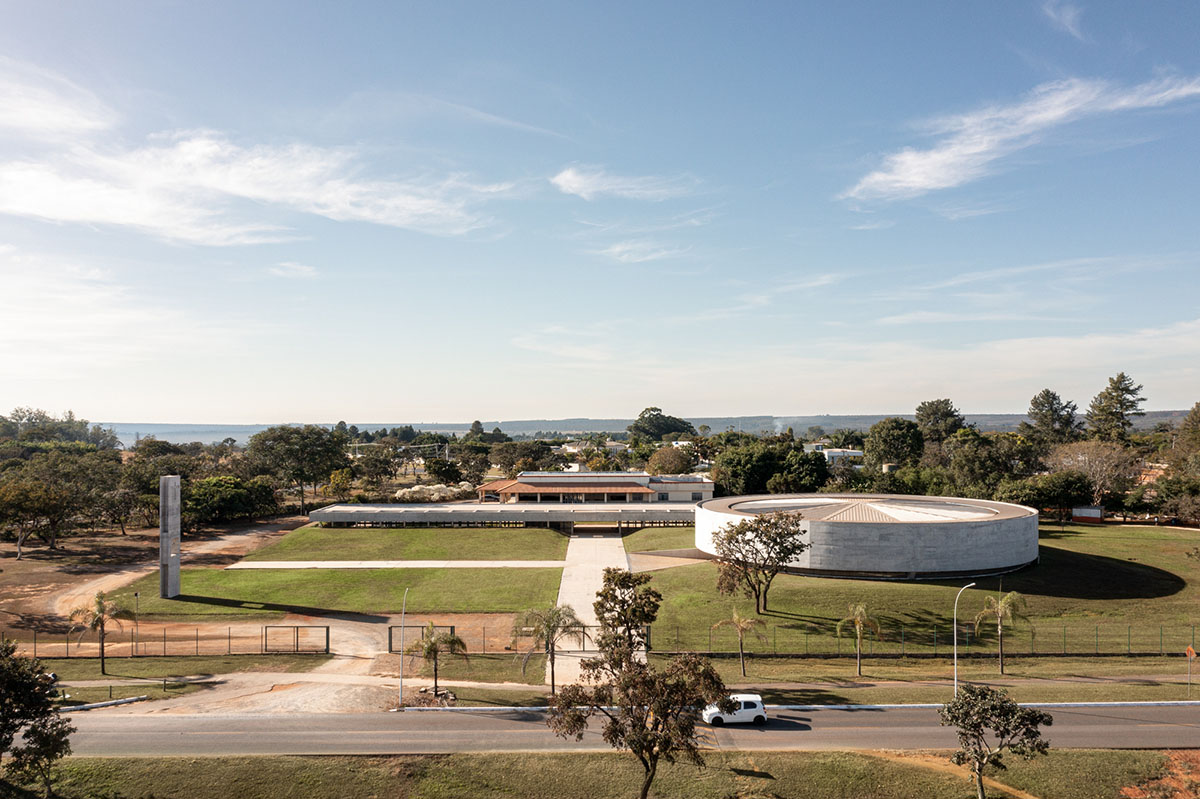
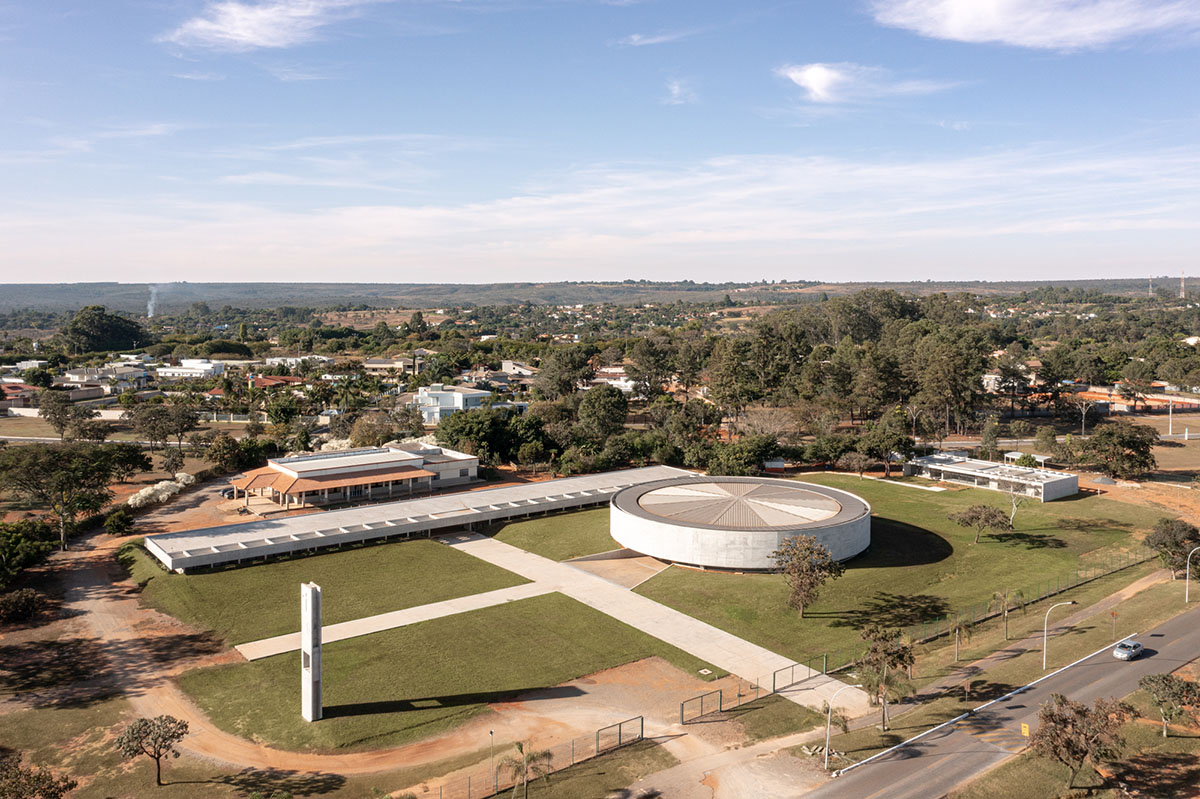
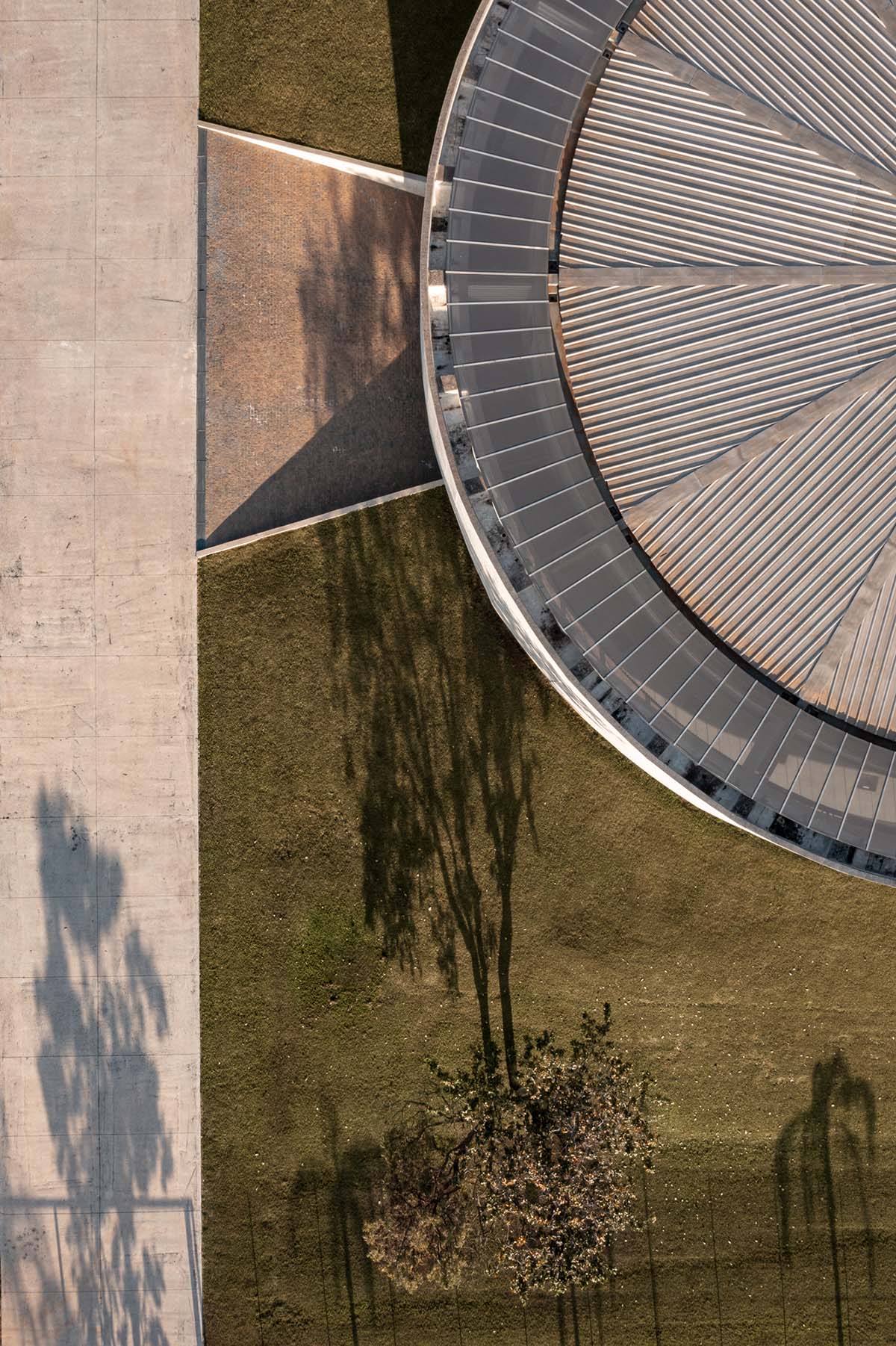
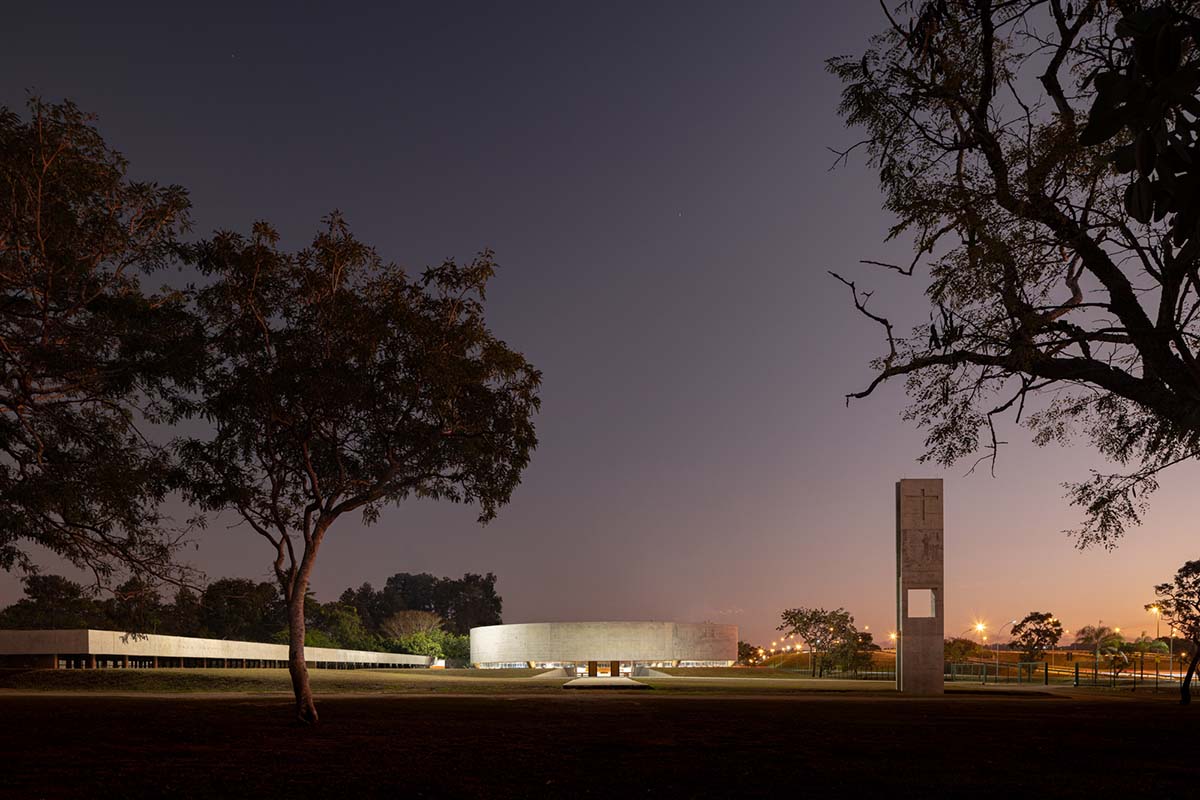
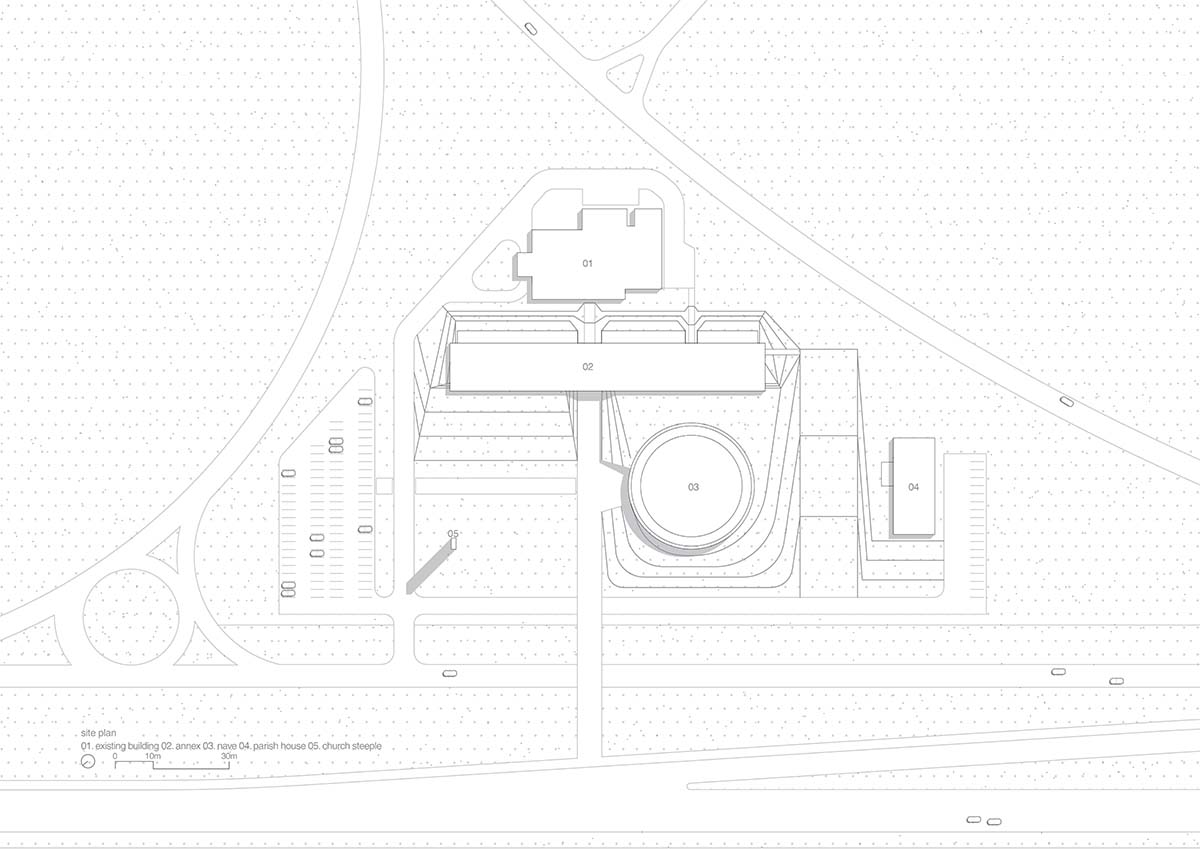
Site plan
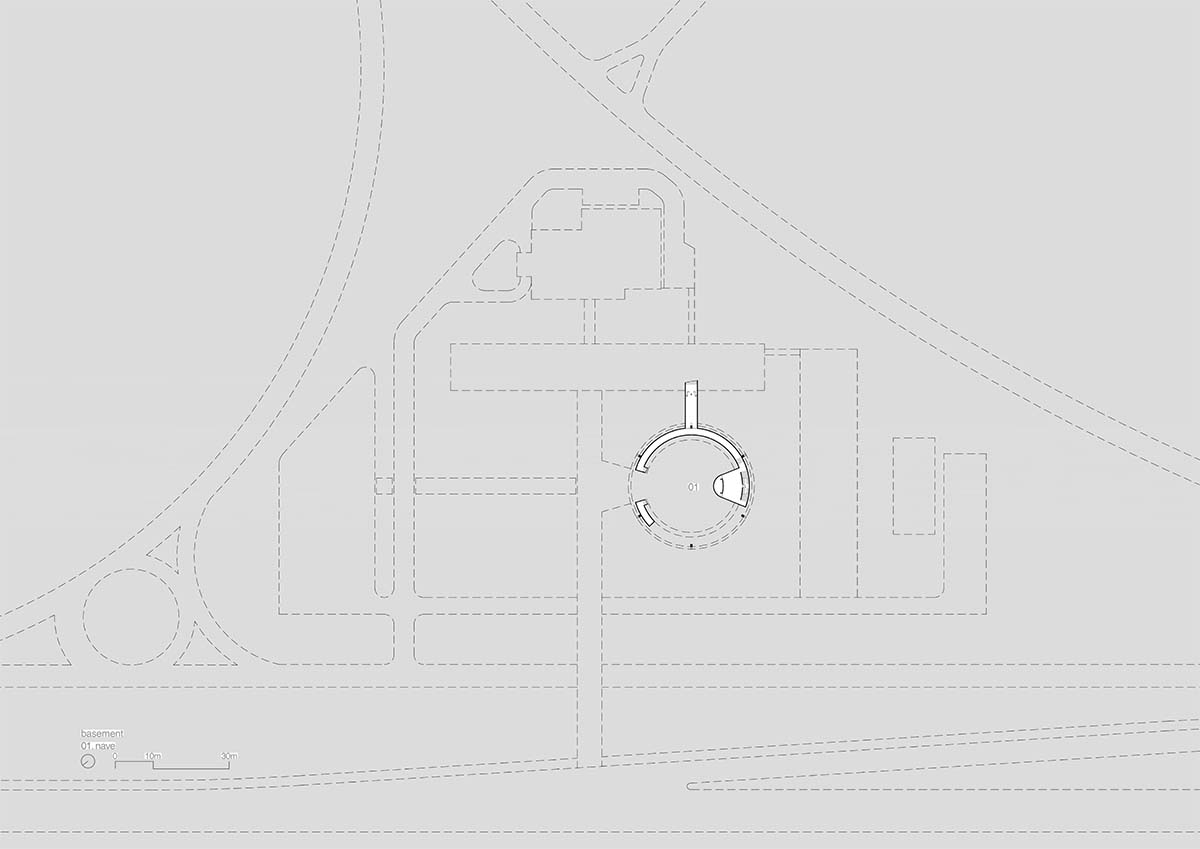
Basement floor plan
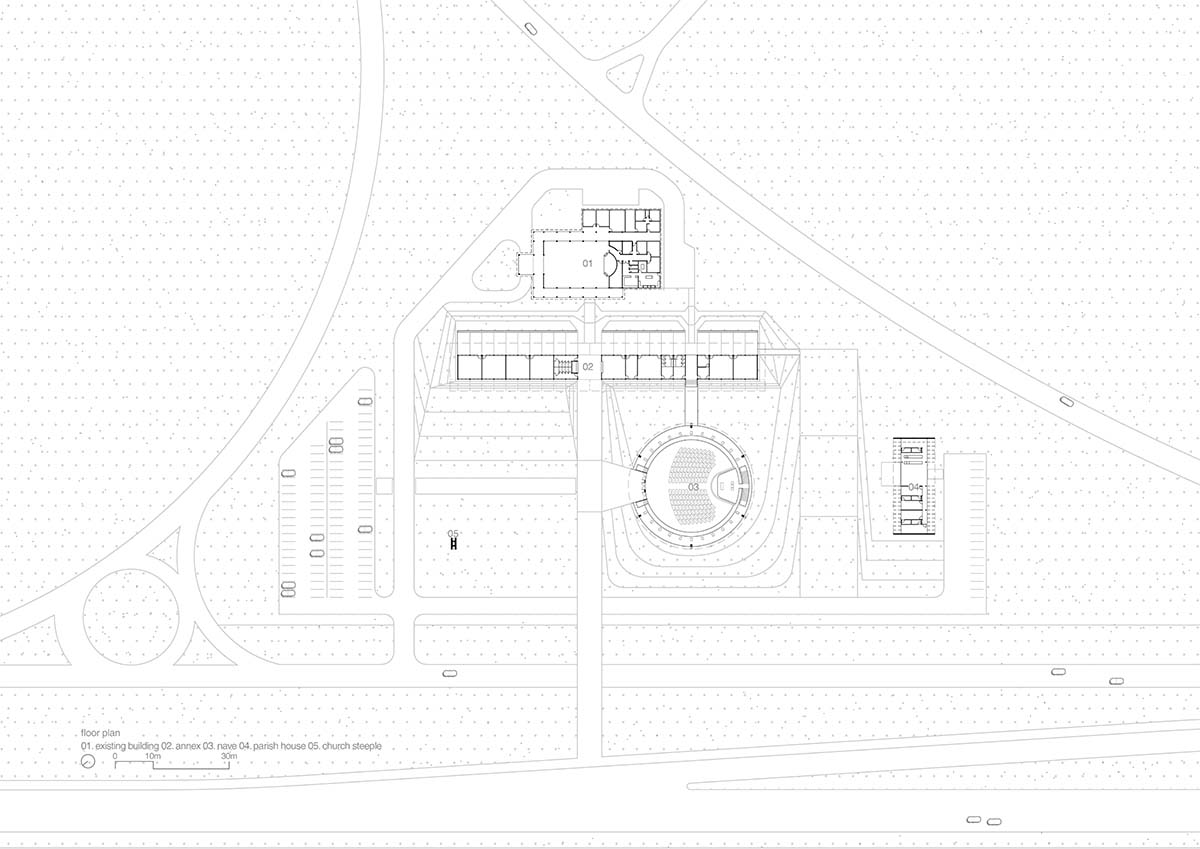
Ground floor plan
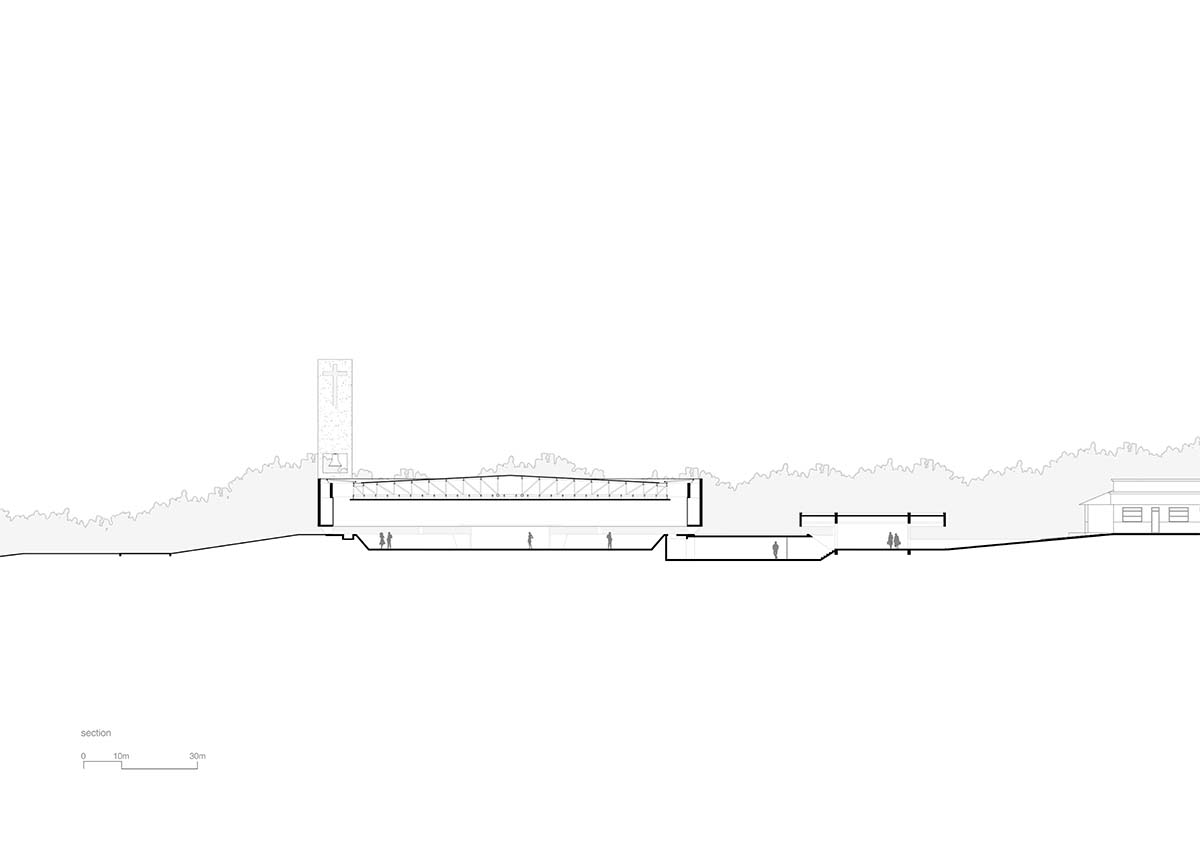
Section
Project facts
Project name: Church of the Holy Family
Architects: ARQBR Arquitetura e Urbanismo
Location: Brasília, Distrito Federal, Brazil.
Area: 3,915 m2
Architecture leads: Arq. Eder Alencar, Arq. André Velloso e Arq. Luciana Saboia.
Collaborators: Arq. Paulo Victor Borges e Margarida Massimo.
Intern: Rodrigo Rezende, Pedro Santos e Julia Huff
Construction year: 2017-2022
Construction: Tecnca Construtora
Steel structure: Comini Tuler
Concrete structure: Breno Rodrigues
Installations: Alencar Costa
Light design: Beth Leite
Acoustics: Síntese Acústica Arquitetônica
Landscape design: Quinta Arquitetura, Design e Paisagismo
Environmental comfort: Quali-A Conforto Ambiental e Eficiência Energética
All images © Joana Franca.
All drawings © ARQBR Arquitetura e Urbanismo.
